WINDPILOT – INTRIGUE – COPYCATS
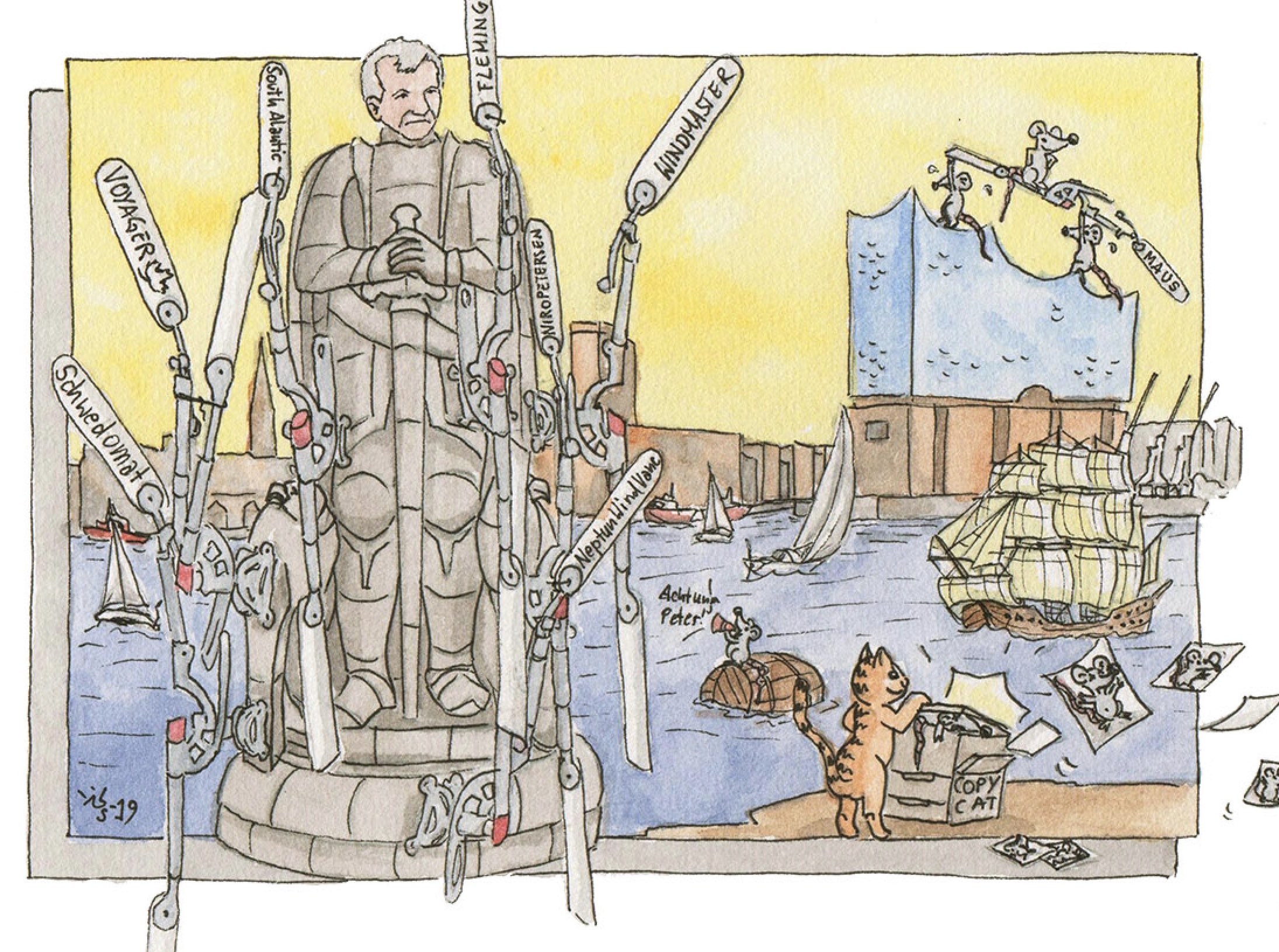
Some people become quite devoted to their cats; others really don’t like cats at all. But surely nobody really likes a copycat, the living embodiment of that human envy and lust for money that drives multinationals and their lawyers –even whole economies – to distraction, inspires and sustains the machinations of our most reprehensible political actors and splits friend from friend and relative from relative when sharp elbows and personal enrichment trump decency and consideration (in real life as well as on TV).
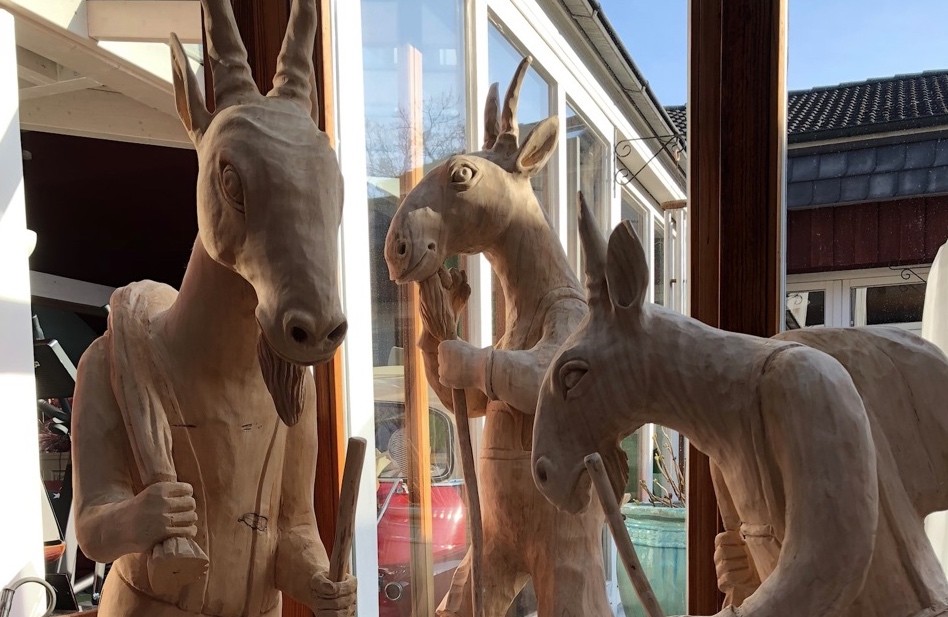
That being the case, what better time could there be for an excursion into the world of patents and intellectual property, the law’s solution to the problem of how to convert innovation into income (for the innovator and the legal professional both, you understand)?
It’s a tempting idea but one I prefer to leave alone just now for fear the subject might distract me altogether from my original intention, which was to share some tales of my experiences with other people keen to win their daily crust from the silent self-steering business – experiences that I feel more inclined to discuss and dissect now that the intervening years have taken the edge off somewhat and given me the distance and perspective necessary to extract some interest and meaning from them for myself and, I hope, for you the reader, anxious as you doubtless must be (who wouldn’t be?) to learn the insider secrets and scandals of the names and brands familiar to all (nearly all?) who frequent the bluewater cruising scene.
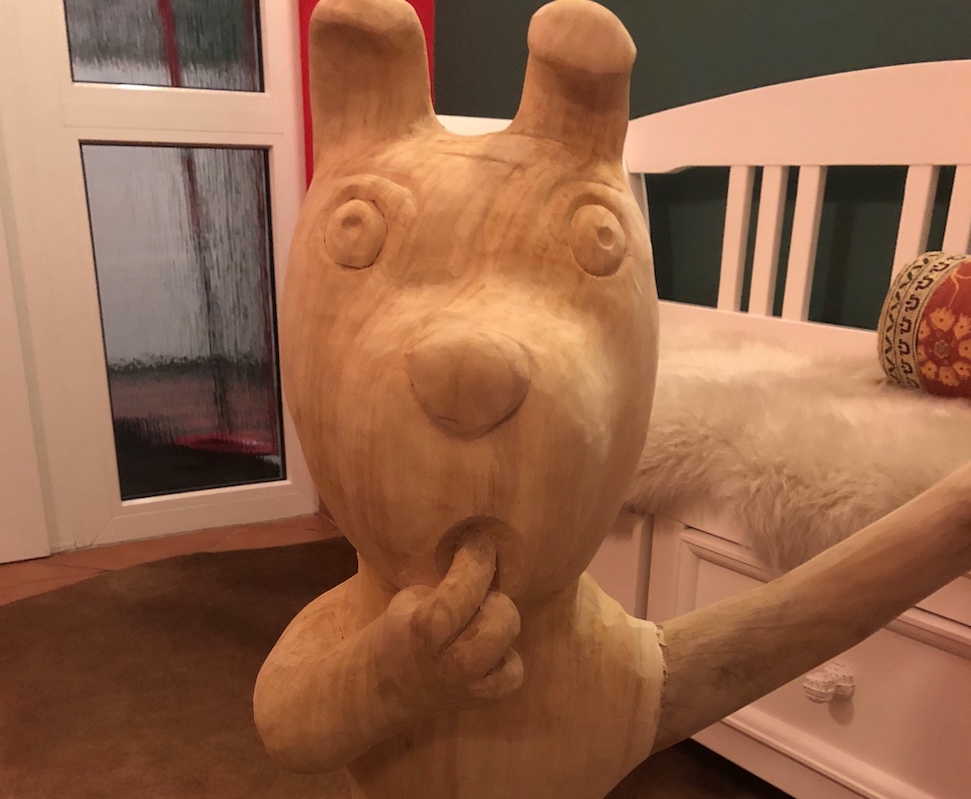
HOW I SEE IT
What would life be without resilience, if the slings and arrows of outrageous fortune (be they real or imagined) hit home every time and bouncing back was a mountain to climb rather than a spontaneous reaction? Take he who laughs longest: first he has to endure long enough to laugh last, to learn the hard lessons of the marketplace and hold his ground while others turn a deaf ear to the irresistible realities and duly fade away.
Is it not, after all, one of the remarkable rules to the game of human interaction never to own up to our personal failings but instead to deal with them – if deal with them we must – by offloading them as primed and timed reproaches onto the shoulders or psyche of others? The weaker our ground, the more stubbornly we defend our position and the more vulnerable we feel, the more vehemently we dissect the shortcomings of those around us: blink first and you lose! Resilience, I suggest, offers a way out of this senseless loop by allowing us to step back, assess what matters and what doesn’t and digest the implications.
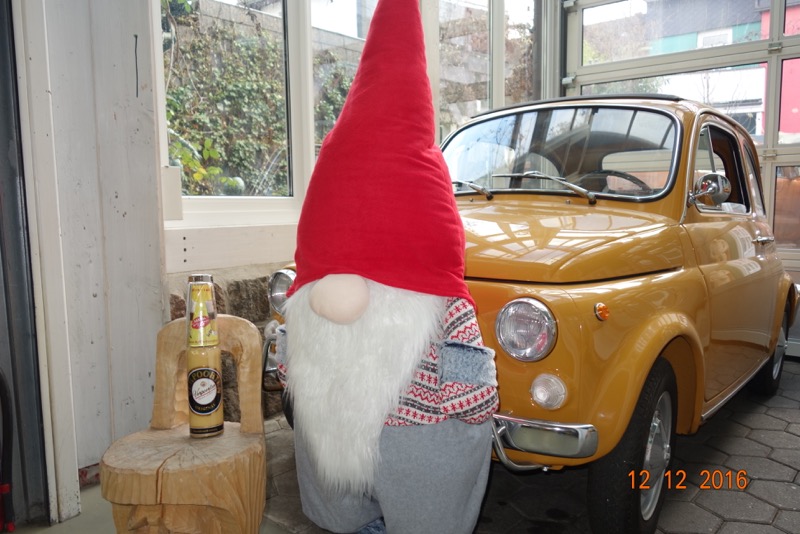
DIALOGUE OR DIKTAT?
My 55 years of accumulated experience in matters maritime have shaped my very nature and profoundly influenced how I interact with people. The sanguine type, wide-eyed and innocent in every aspect of life, I set off with a positive outlook that nothing could undermine and a curiosity so fierce it almost took on a life of its own. What a fine armoury for life, I thought, so perfectly attuned to finding all the new toys and games out there just waiting to be discovered. A crafty fellow full of heart, verve and urgency, the lad Foerthmann was fox and hound in one, always on the hunt and (though I have realised this only with the benefit of hindsight), always being hunted – always in the sights of someone with designs on whatever resources I might have available to lose, someone happy to ride the wave of my enthusiasm while preferring to overlook the principles of consideration and mutual respect. How often I felt close to triumph when in truth the jaws of the trap, the strands of the web, the grasping tentacles were already closing around me and I was already as good as stuck in yet another situation escapable only on payment of a ransom. Fear not though: fortunately not all of my life experience can be reduced to ongoing financial liabilities!
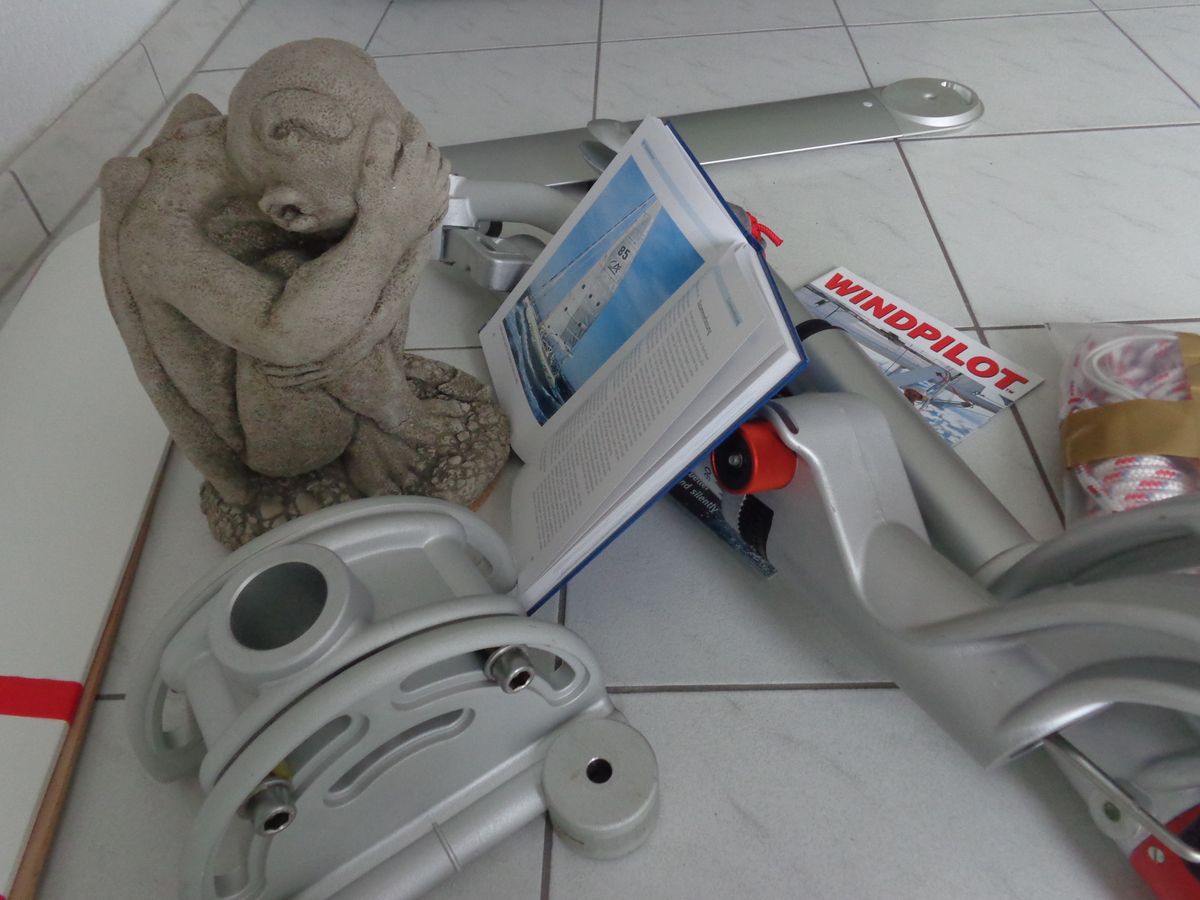
THE CHINK INMY ARMOUR
I gave people my full respect and received and endured lectures of all types, largely unquestioningly, as I strove to trace a feasible short cut or plan for life that might let me move forwards without constantly striking the wrong note (it gets boring after a while). I had to wait until I was a bit older for my social depth sounder to start working.
MY PROGRAMMING ERROR
What really sank me was my respectful belief in the pretty words and promises launched from mouths all around to fire me up, to inspire me or, when need be, to shut me down. I seemed to manage to lose my way – allow myself to be led astray – time and again without ever putting two and two together and raising my guard. Life has exposed a seemingly never-ending series of bugs in my programming and the patches have never been cheap or easy to install!

OF HARMONES AND SUCH
Bringing testosterone into the game added another level of complication, dropping the decision-making down to a more basic stratum until, a year/month/week/good night’s sleep later I realised the thrill had gone, the consequences would be along soon and the time had come to move the thinking back upstairs once more and see what life would offer up next.
These experiences – priority number one for men of a certain age – were of great interest to me at the time (despite all following exactly the same pattern) but it would serve no purpose to rehash the details here so I will jump straight to the final result: eventually I recognised the demons for what they were and exorcised them from my life. It took a few decades and a few big cheques payable to the bank of life, but in the end I came to see my various misadventures as ideal material for a light-hearted autobiography in brief.
I explored for myself how theory and practice measure up to each other, discovering a rocky path that led at last to realisations, knowledge and a soul at peace (within reason) with itself and the world around it.

A “POSITION OF RELATIVE COMFORT”
Seen it all, survived it all, still smiling… The Americans have a (not suitable for work) expression for that point when you realise your position has become relatively comfortable and that you are largely in control of your own life: the position of f-you (definitely not suitable for work summary here). Reducing the position of f-you to a specific amount of money in the bank though seems a waste of a valuable concept. Independence is independence: why peg it to material assets?
How did Windpilot and I reach the “position of relative comfort”? It’s a tale of discovery and of a market niche rich in copycats and intrigue.
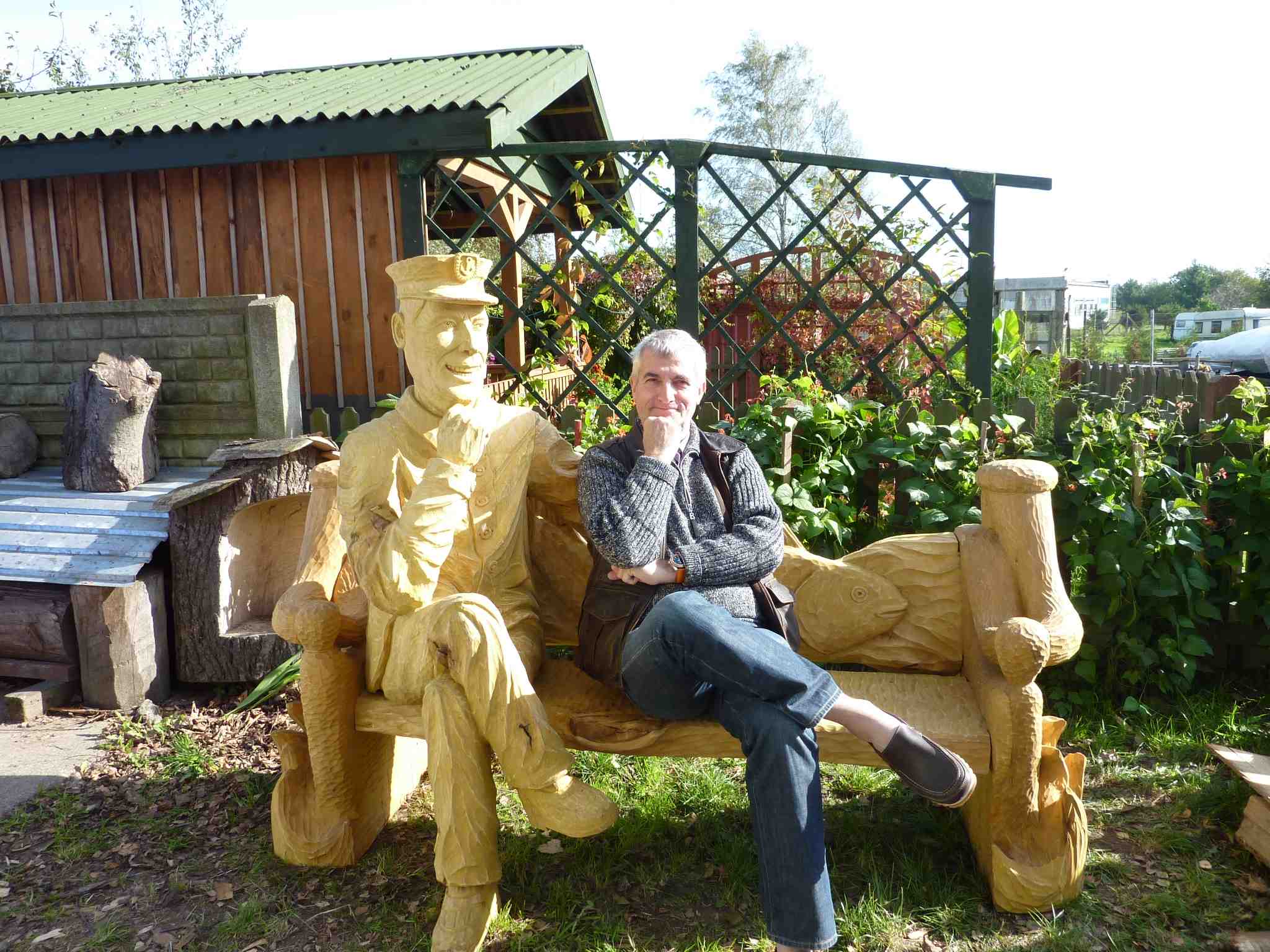
WINDPILOT – A BRIEF HISTORY
I used once to own a steel yawl. One day I went out for a sail with a man who owned a windvane self-steering company and a few hours later the yawl was his and the company mine. I traded a boat for a draughty workshop full of oily machinery and a brand name that couldn’t be bettered: to my mind it was the stuff of dreams and a perfectly logical way of bringing a little of the spirit of Bernard Moitessier (who hasn’t been at least somewhat inspired by his book?) into my own life. The decision took a moment to make; it felt almost as though it made itself. My (then) wife decided just as quickly that I must be out of my mind.
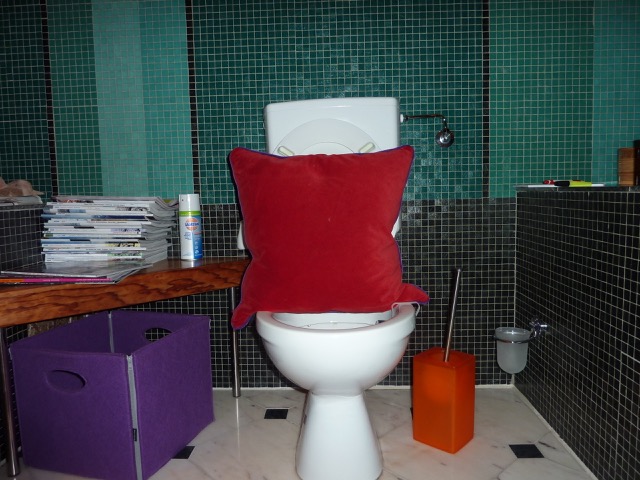
MY CONTRIBUTION
My contributions so far to the state of the art in windvane self-steering are as follows
– Arrangement of a windvane bracket between the bearings of a pendulum arm (rather than above or below)
– Transfer of the point of force transmission to the upper end of the pendulum arm (rather than the lower end)
– Variable force transmission and the use of a wheel adaptor modelled on disk brakes
– The pendulum arm lift-up feature for rapid system deployment and withdrawal
– Multiple mounting options for different stern configurations
– Development of the Pacific and Pacific Plus sister systems
– Development of an extremely versatile modular product range
– Introduction of industrial manufacturing methods with direct sales worldwide
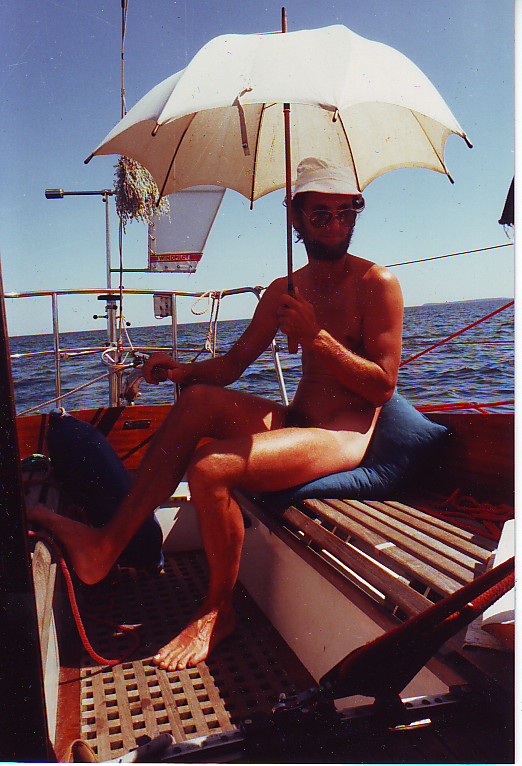
I should perhaps also add that Windpilot has developed a system code that now contains design details of almost every yacht design in the world ever to enter series production in order to simplify our internal procedures. Initially a waste product, this database has evolved into a veritable treasure that makes dealings and communication with the global cruising community vastly more straightforward because I have the key details of most boats ready at my fingertips..
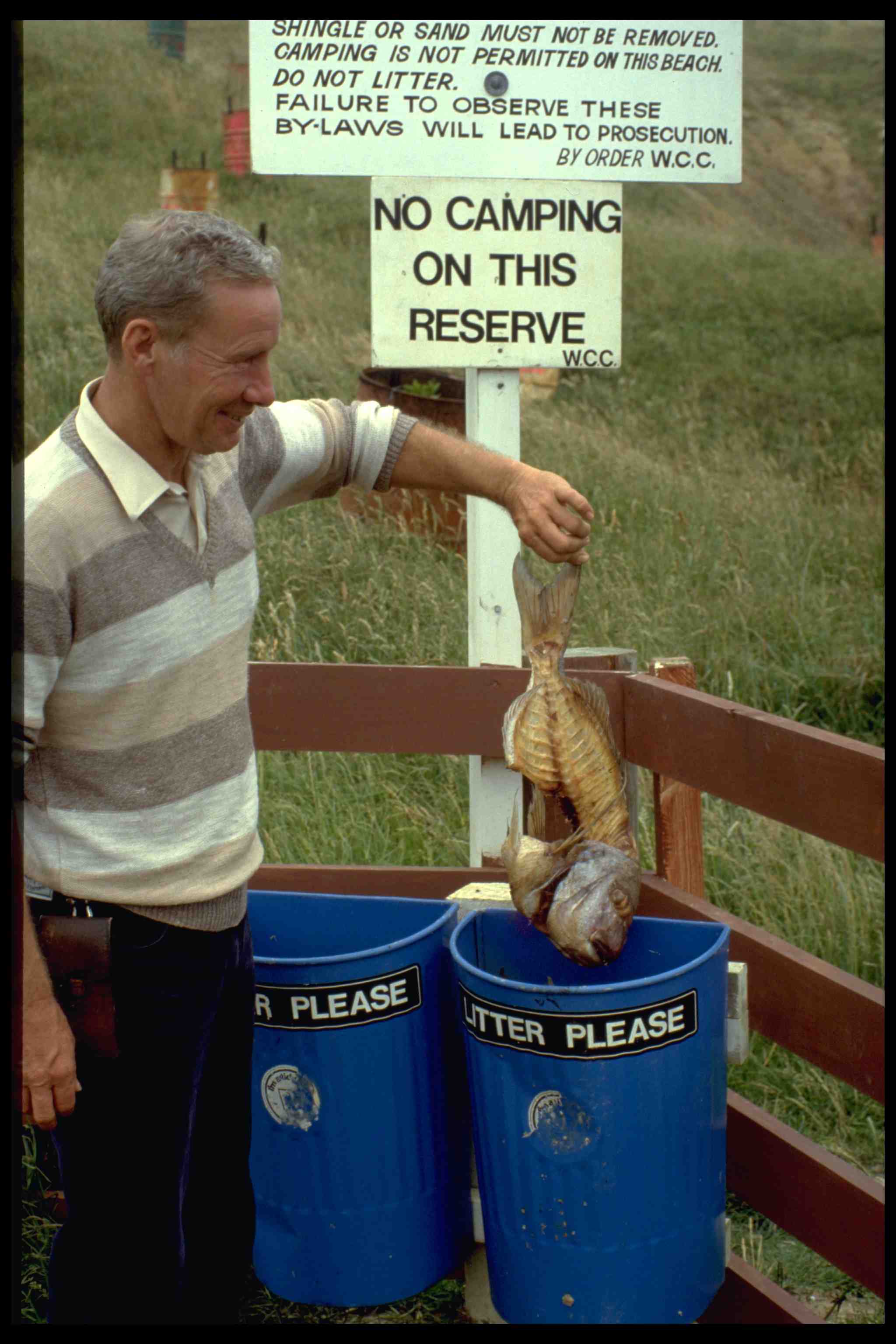
Condensing a life into a few simple sentences like this comes so easily that I could almost forget the amount of time, energy and endurance it has required to keep on keeping my head above the water. The trials – mostly figurative but occasionally the kind with lawyers and a judge – have come thick and fast, marking my path and shaping the pattern of my life and my character (divorces are nothing if not character-building and I have had three).
All these various influences have contributed to making me the person I am today: full of the joys of life, somewhat inclined to an ironic, sardonic view of existence and reasonably well schooled (at last) in understanding what people really want with or from me and how to ensure they only get it on an amicable, or at least equitable, basis. So far I have always been able to find a way to take something positive out of life’s various skirmishes and continue on my way with my head up and hope for the future: what one might call a kinder, gentler (and certainly less cash-oriented) take on the “position of f-you”.
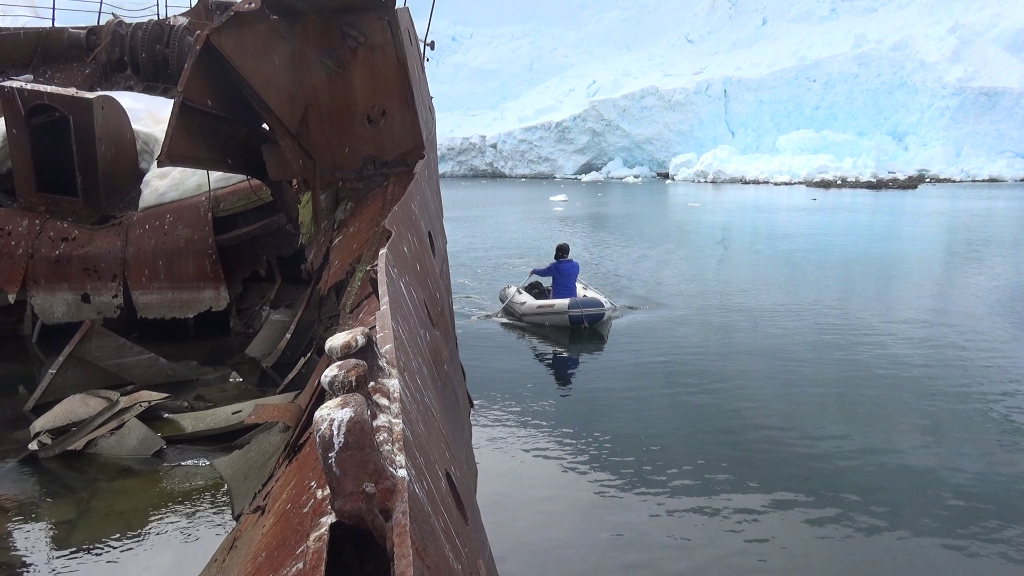
Are we ready now to delve down into the dark underside of the marine business, where the salt air and the sound of lapping water do little to mask the intrigue, deviousness, envy, hypocrisy, skulduggery and generally despicable behaviour that infect all areas of life in which the accumulation of cash is the primary objective?
Fasten your seatbelts…
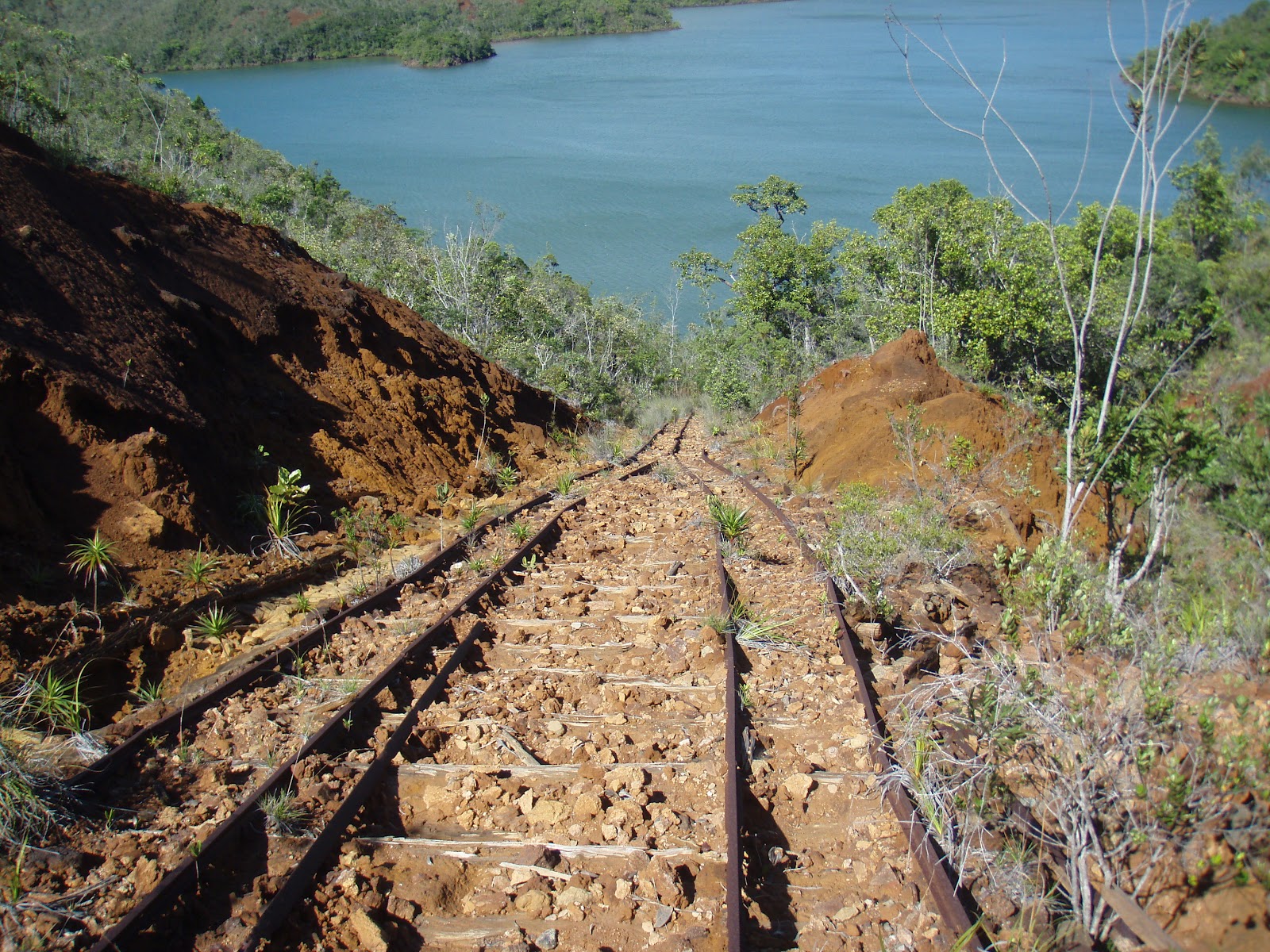
PETER AND THE MARKET
My various commercial (mis)adventures are recounted and analysed in detail in my blog under the “Peter + the market” heading in an effort to explain how I came to see the world as I now do and provide some justification for my philosophy: in a dog-eat-dog world, it pays handsomely always to keep an eye out for the golden nuggets among humanity’s pebbles and silt – the yield more than makes up in quality what it lacks in quantity.
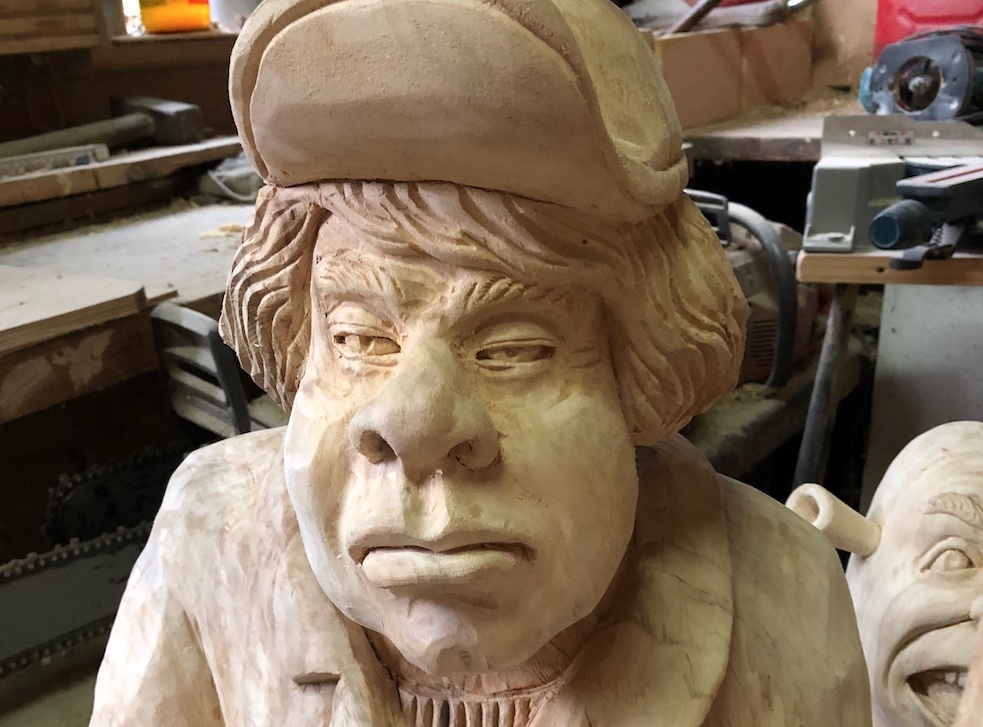
How people interact in social settings can be particularly revealing, especially if the words that come out of their mouth conflict with their body language (or the general sense of dissatisfaction emanating from every pore). Sailing tends to put a smile on people’s face. The number of friendly people to be found on and around boats is quite remarkable – and most welcome for someone like me who spends his life in contact with the global cruising community. I regard it a pleasure and a privilege as well as a responsibility to have bluewater sailors as my customer base and target market. My market suits me and I hope I suit my market – this is my calling.
Before we all fall into misty-eyed reverie, however, I must point out that my industry has plenty of uncharted reefs to go with its palm-fringed bays and that I have spent as much time as anyone struggling to find my way back to fair winds and clear water under the keel.
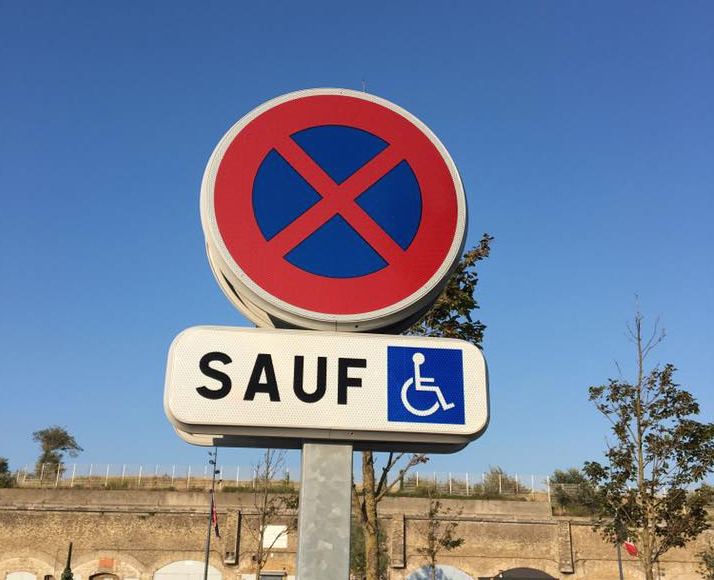
FROM THE BEGINNING
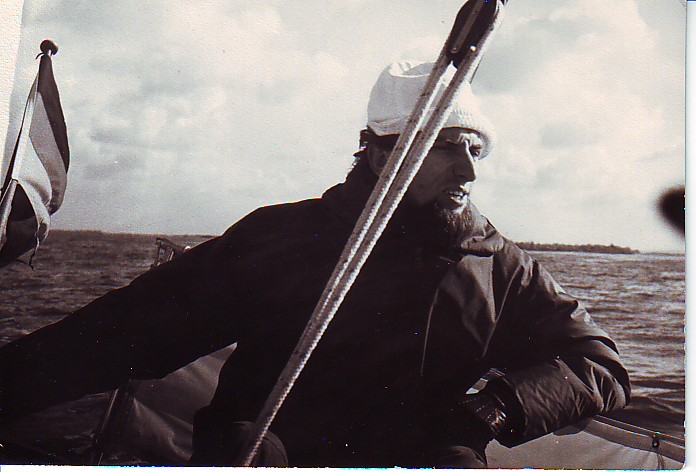
WINDMASTER
The realities of the business into which I had jumped were brought home to me (for the first time) just a few days after I swapped my yawl for Windpilot. A company called Windmaster, which was selling Windpilot clones from a base in Kiel, apparently wanted me out of the market and the law seemed to be my only recourse. Eventually our confrontations in and out of court gave way to a surprising friendship between me and my opponent, Jochen Claussen, and – sailors both – we finally resolved everything amicably with a handshake. The entire Windmaster inventory was delivered to my door shortly afterwards, slashing the average age of my workshop machinery in the process.
NIRO PETERSEN
A short time later I became aware of one Niro Petersen from Flensburg, who was marketing (wholesale and retail) a copy of my tiller adapter. His response, when I reminded him that I had legal rights covering the design concerned, amounted essentially to, “Good for you. See you in court”.
This was a new world for me, one I could never have imagined (or wished to imagine). How was I to know these early tussles were but a tiny taste of things to come?
PETER TIETZ – CANADA
One day towards the end of the 1970s I received a letter from Canada. Peter Tietz, a Berliner who had emigrated to Canada shortly after the Wall went up, wondered if I might be interested in the possibility of a Windpilot representative office in his new home country. I gladly embraced the opportunity, only to discover shortly afterwards that the man’s actual plan was to duplicate my systems under my brand at his workshop in Cambridge Ontario and sell them for his own account. What tipped me off were comments from a succession of disgruntled Canadian sailors lamenting defects in the product supplied to them and reminding me of the importance of doing a better job next time.
At the risk of making myself look like a twit, I have to admit that there is a sequel to the Peter Tietz story.
Wind forwards 20 years – Windpilot had by now switched to industrial manufacturing methods and the Pacific/Pacific Plus range – and I received a visit from the whole Tietz family, daughter and mother-in-law included. Friendly faces, friendly gestures, heartfelt apologies for past actions that could now apparently safely be dismissed as “water under the bridge” or some such: I was touched and conceded on the spot (bear in mind this all happened at a time when I still automatically equated friendly faces with friendly intentions).
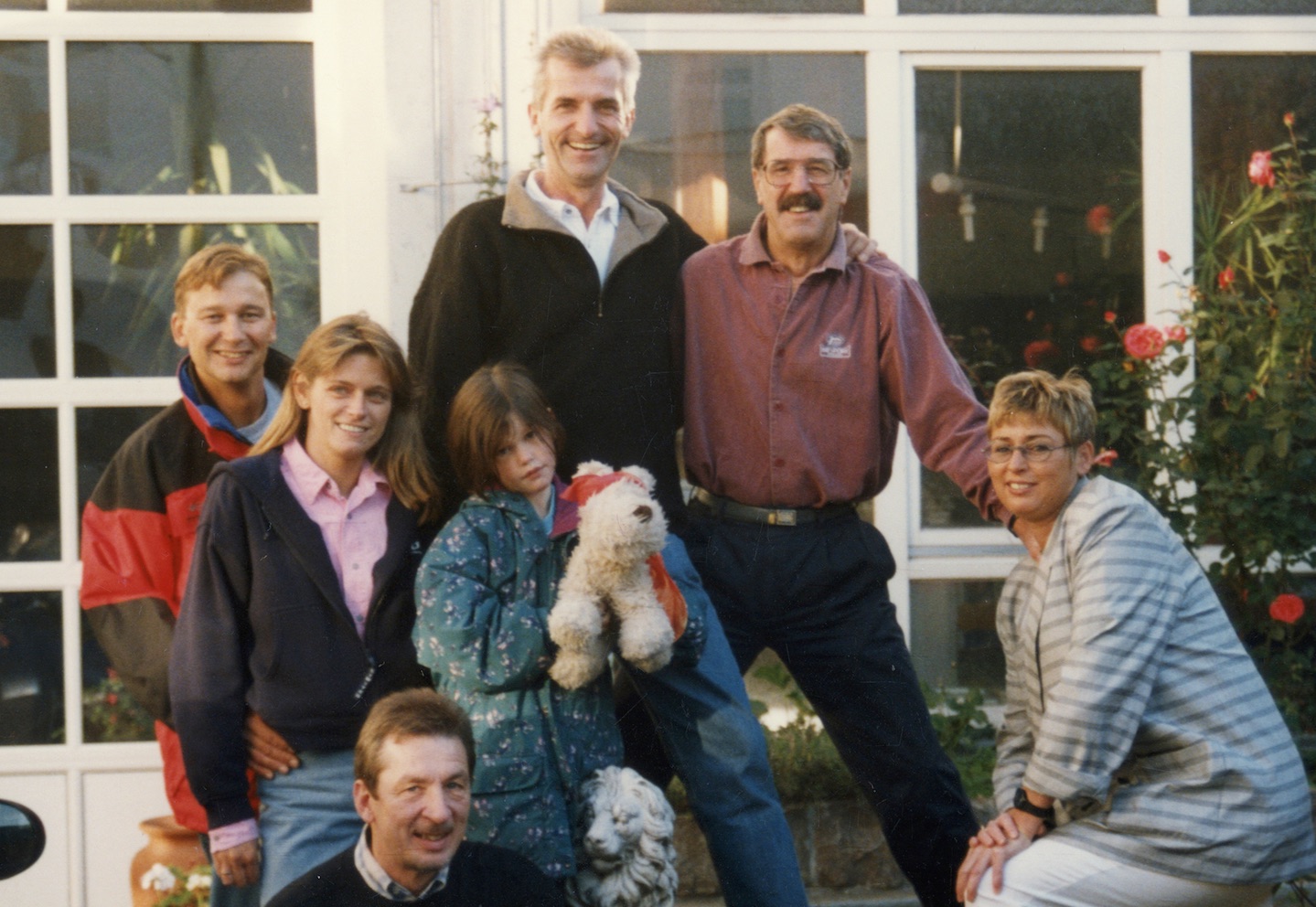
The proposition for me this time was support to help my brand make the breakthrough in North America as a whole. A contract was drafted and signed, a few of my systems set off by airfreight across the Atlantic … and then the flow of orders dried up again. Small businesses always struggle to see beyond their day-to-day problems and the challenge of anticipating what customers might want tomorrow. I couldn’t be everywhere in the world at once – and in any case I could never have imagined how much trouble was brewing for me while my time was occupied with other things.
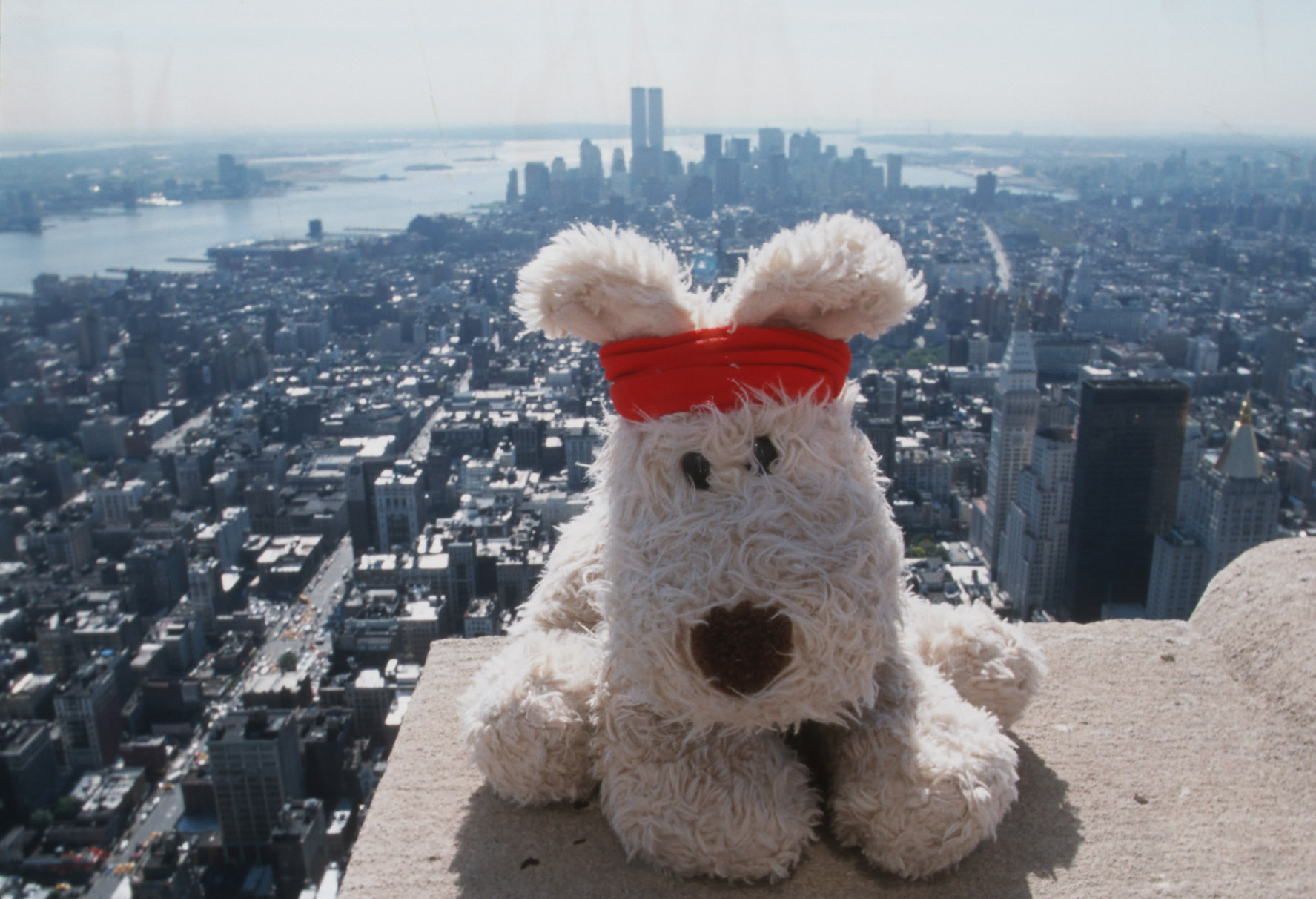
My ignorance ended with the start of the 1998 Annapolis Boat Show, by which time Peter Tietz had established his own brand, Voyager, and unveiled a product that would have seemed tremendously familiar to anyone who had ever laid eyes on a Windpilot. When the boat show finished, I headed straight off to Canada and paid the Tietz family an unannounced evening visit. I cannot forget the look of utter helplessness in Susan Tietz’s face as her husband stood there trying to wash his hands of the whole sorry business. “I live and learn”, I told myself – not for the first time – but took little comfort from encountering and surviving another high magnitude event on my Richter scale of human misconduct. Experiences like this leave a mark on the soul.
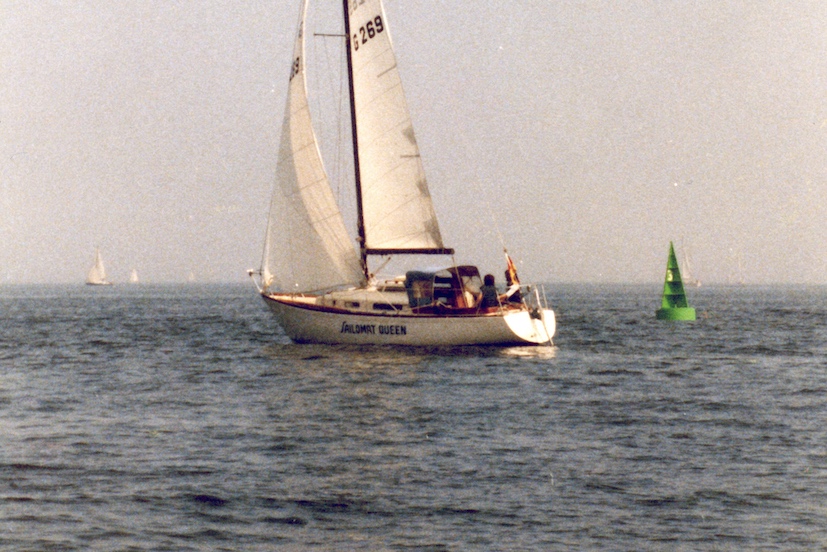
STELLAN KNÖÖSS – CALIFORNIA
I deal with this affair in a separate report and would only add 1) that the legal papers are sitting in my basement in FIVE boxes (labelled in terms you certainly wouldn’t want your children to use) and 2) that it takes more than uncommon audacity to sign contracts and marketing agreements that require substantial investment on the part of the other signatory if one does not have any rights to the brand one is purporting to own. I was thoroughly taken in, completely fooled: there was never any prospect of these contracts being honoured and the whole thing could easily have ruined me.
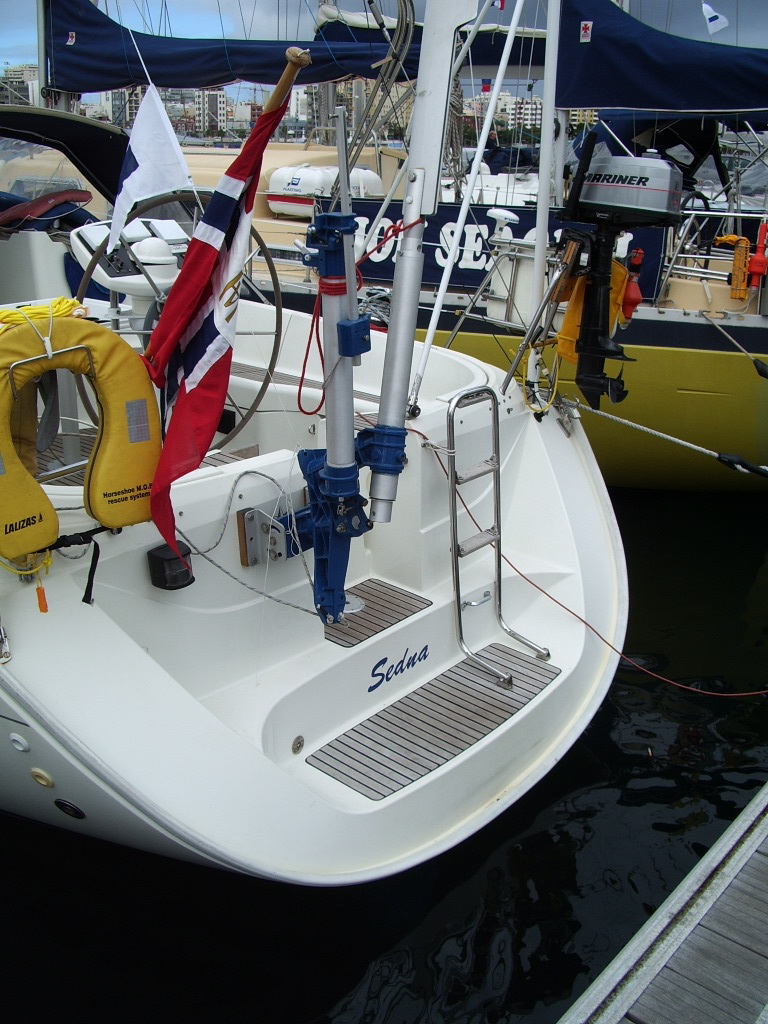
The epilogue to – and irony of – the story is that subsequent iterations of the brand’s product (the brand I prefer to refer to as “Swedomat”) shared a remarkable number of important features with my Pacific series (which series the other side sought to dismiss as copies despite their having been on the market for much longer that its own offerings).
I subsequently learned, as the court proceedings continued, that this man had also enjoyed legal run-ins with both of his original business partners as well as Dutch sales partner Herman Brinks and had in the end even lost his rights with respect to the company’s sole product at that time, the 3040 model (of which only a few hundred were ever made). This was a pearl of a life experience – even by my standards –for the dizzying insight it gave me into the windvane business.
Needless to say I could have managed very well with less insight. Why did I have to learn my lesson the hard way again? I suppose because I could not imagine that someone who had won my trust and lived in my own house could attempt such an outrageous deception. I subsequently tried to explain my gullibility away as typically autistic behaviour, but that didn’t really make me feel any better about it. The message seemed to be that if you trust people, you get ripped off.
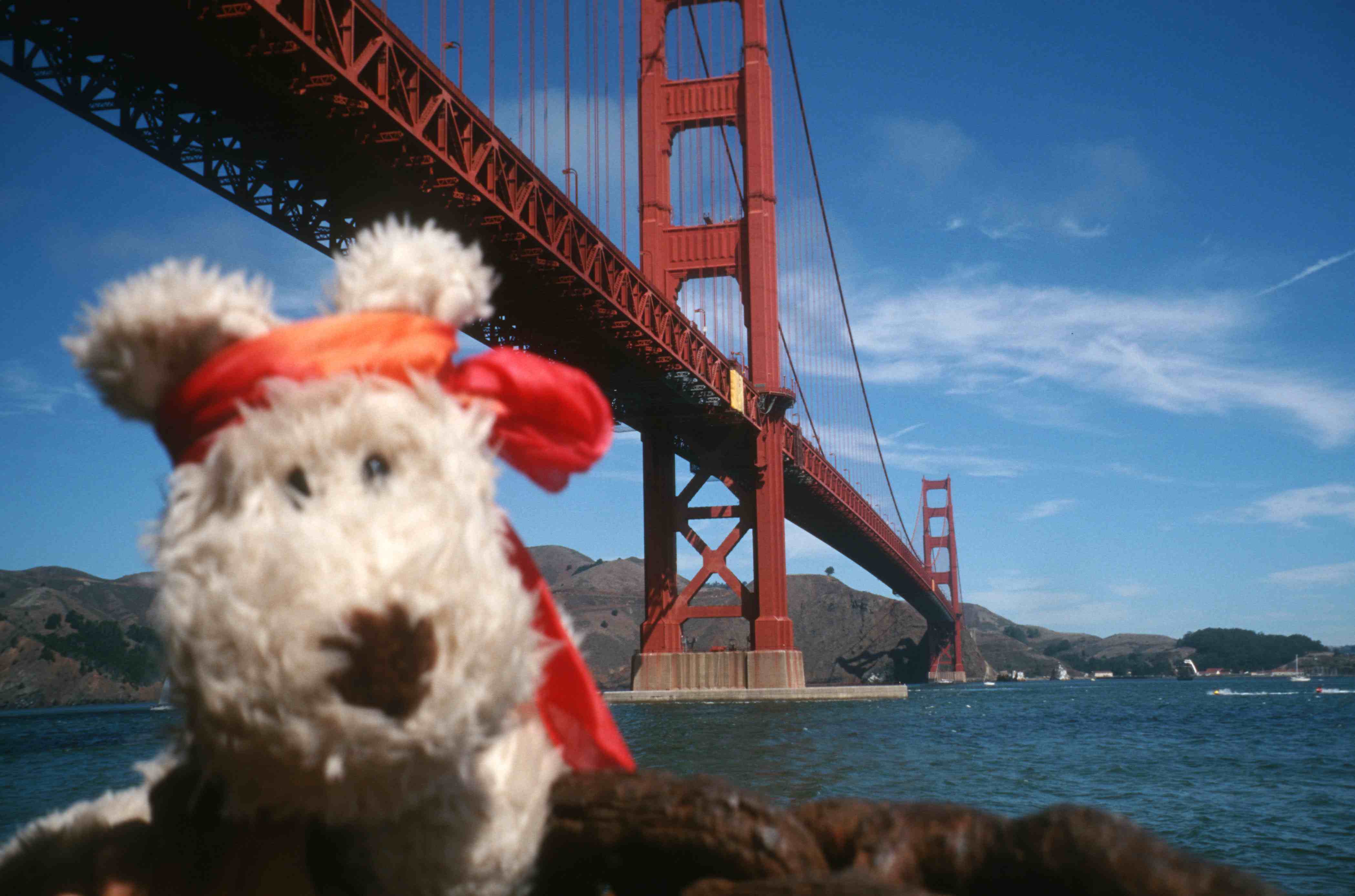
HANS BERNWALL – CALIFORNIA
Hans, who was born in Sweden, sailed around the world as a young man with friend Carl Seipel before settling down in the California sun and, shortly thereafter, concluding an arrangement with then-friend Stellan Knöös to handle the latter’s marketing in the USA. Not long later, the friendship and the business relationship based on it came to an abrupt end (!) and Hans had the good fortune to find himself in the position to take over the assets of a US product based on the Aries system, which he went on to manufacture and sell himself under the Monitor brand. Hans never missed the chance to praise the merits of the Aries and his almost fanatical enthusiasm for the system gave it a huge boost in the USA, especially after Nick Franklin stopped manufacturing it in the UK in the 1990s.
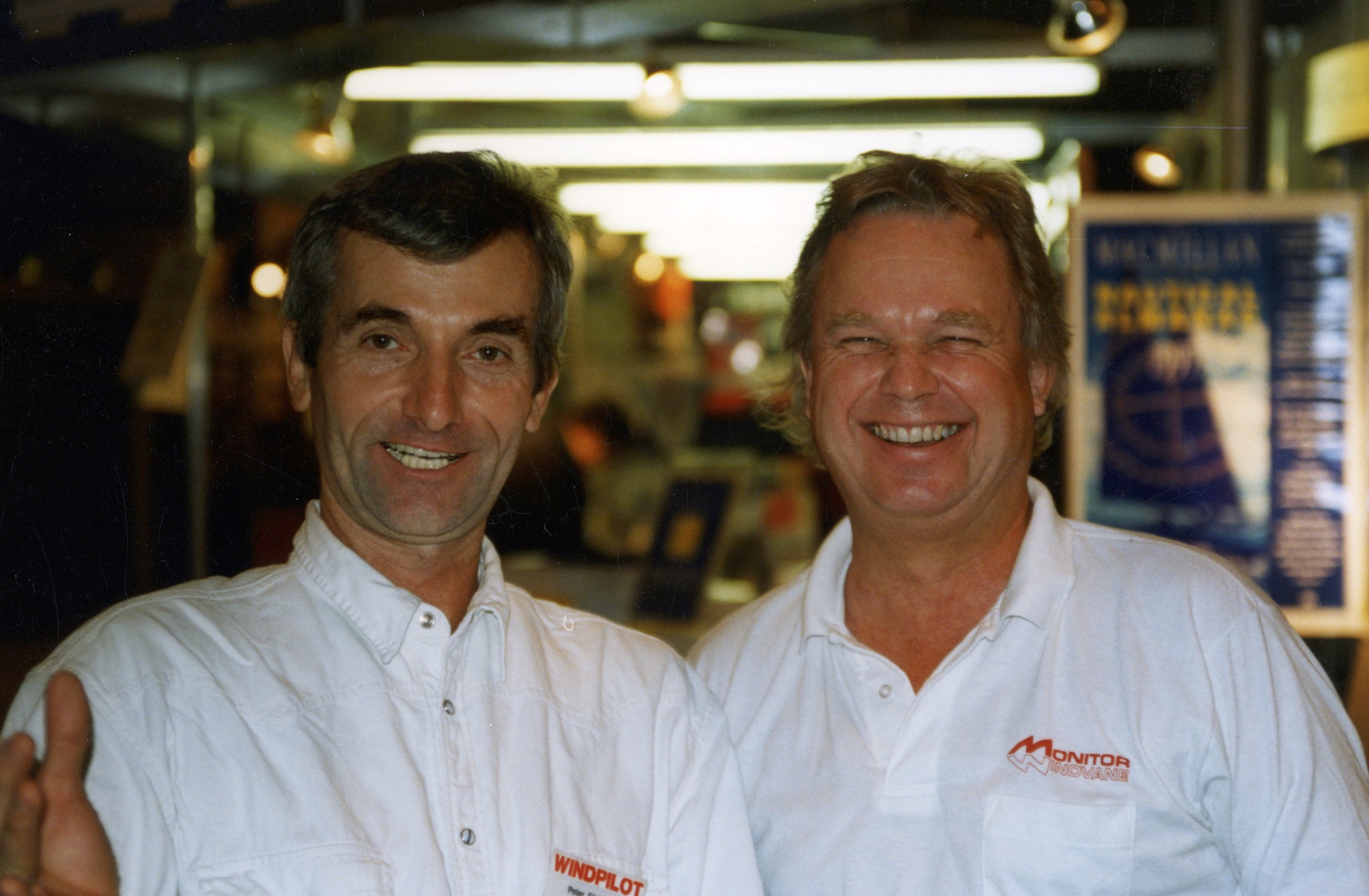
Hans and I saw each other regularly at boat shows around the world and I think he was happy to look upon me as prince to his king in the vanegear business; in fact I think Hans was happy with most things in life – I wonder if he has ever stopped smiling…
In 1997 Hans invited me to stay with him at his home in Sausalito and I gladly accepted. The view across San Francisco Bay from my bedroom window was glorious. I was impressed – and glad to have the chance to show Hans a pre-publication copy of my book, Selfsteering under Sail. He read it through enthusiastically (as I watched on) and even decided to have publisher Adlard Coles place an advert for his Monitor system in the back. Hans passed the reins over to one of his customers a few years ago.
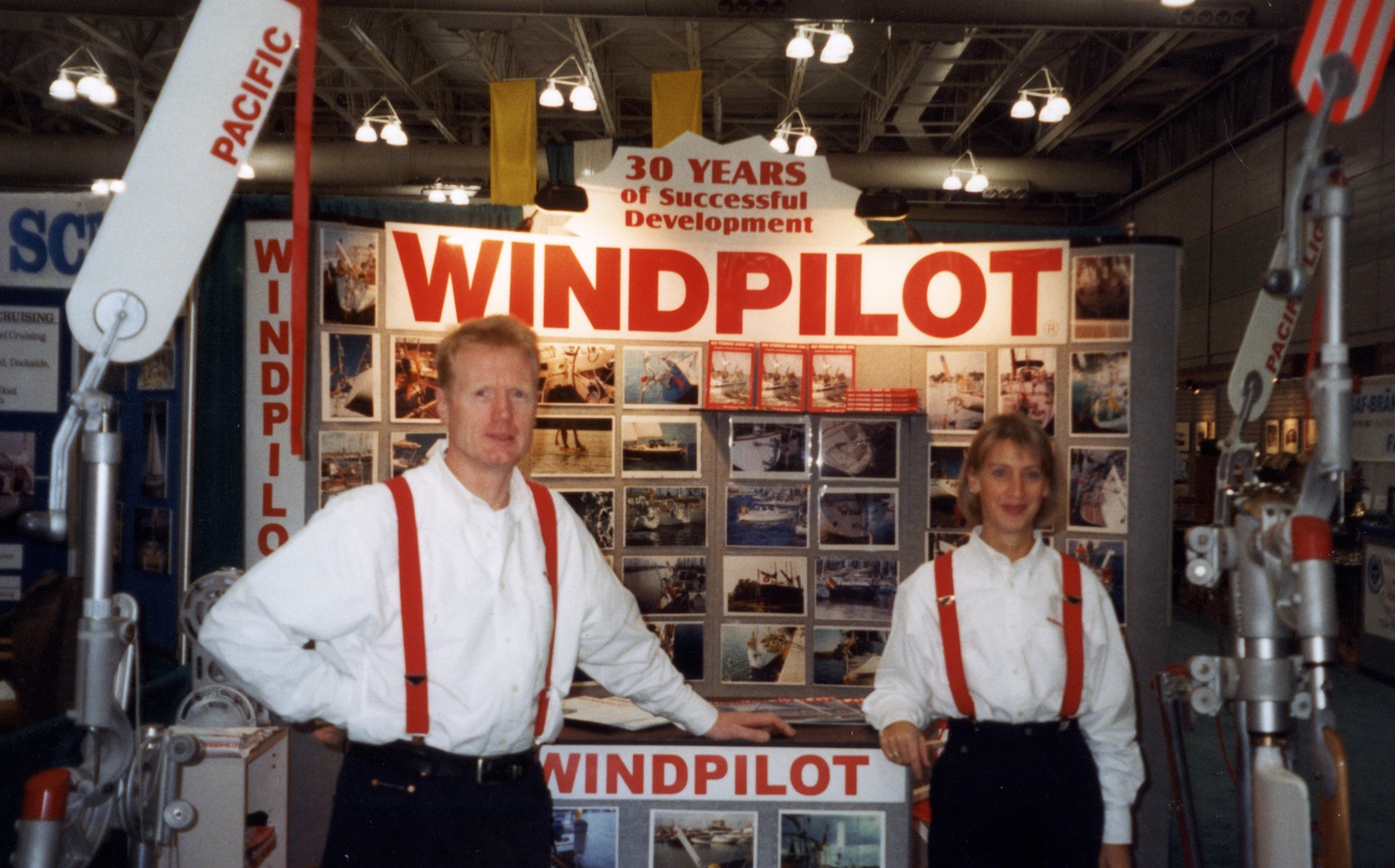
DIRK R. WEITER – FLORIDA
Dirk and his wife Doris Heitzmann, who used to live around the corner from me in Hamburg, won me over with their proposition that we should work together to establish a representative office in the USA, to where they were intending to emigrate. The whole story can be found here:
The bottom line: what use are legal agreements if the people you sign them with are relying on the daunting cost of international litigation to prevent you ever holding them to their promises? Such avarice motivated these people that they could not content themselves with splendid salaries and a company car and had to clean out the petty cash and bank account as well. They even hit on the idea of selling Windpilot orders to a competitor: is there any limit to the extent to which one can be deceived? Luckily (?!) for me, I smelled a rat just seven months into our arrangement and was able to apply the emergency brake, kick the pair of them out and set the Florida legal system to work.
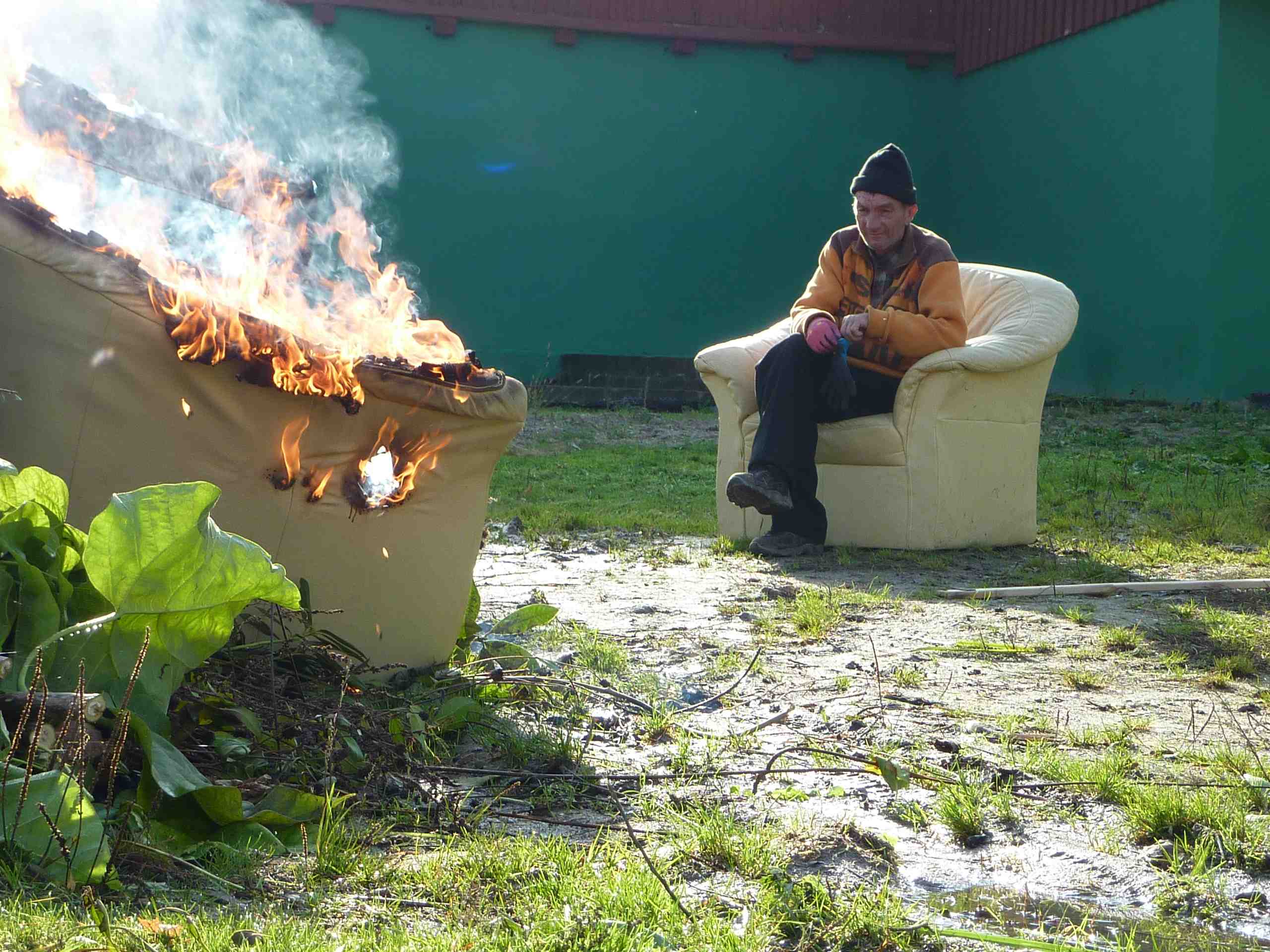
This bitter draught of life’s medicine left my self-confidence in tatters and it took me years to make good the financial damage. Florida, it turns out, is a debtor’s paradise because if the courts find against you, you cannot be forced to sell your home to raise the money necessary to comply with the court’s decision. This “homestead exemption” took no account of the fact that the money Dirk and Doris used to buy their home (and their aeroplane, for that matter) in the first place was, presumably, the very money they had fraudulently siphoned off from me. That said, mentally processing what had happened was at least as difficult as doing something about it.
Mentally I filed the experience away as an expensive market launch and carried on carrying on, somewhat the worse for wear but still committed to the cause.
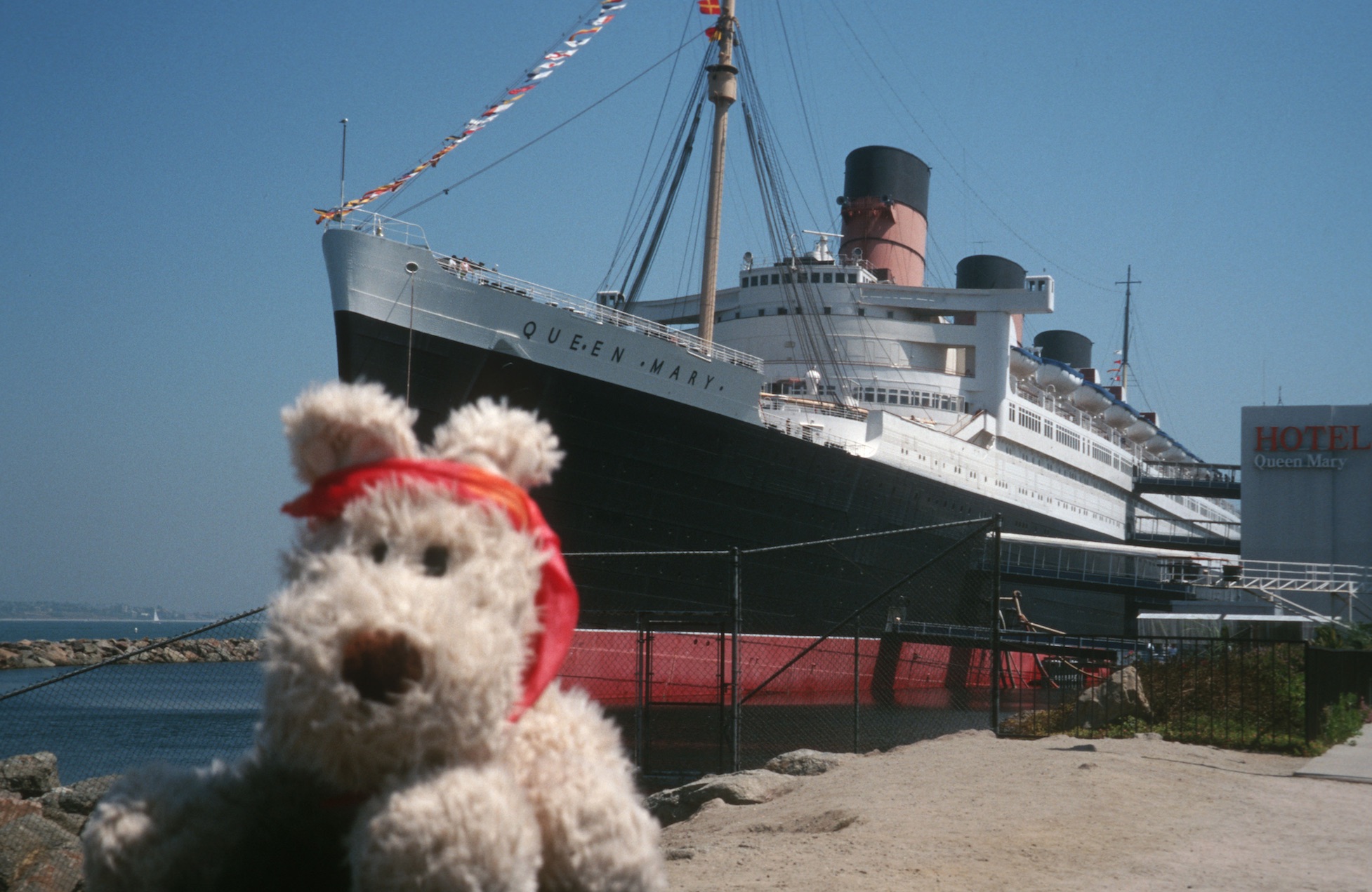
KEVIN FLEMING – CALIFORNIA
I have always enjoyed California and the Californian sun, so I didn’t object too much in 1997 when it became obvious that I needed to make another visit. This time though I was bound for the South, which was enemy territory now that Stellan Knöös had pitched his tent in La Jolla and Kevin Fleming, who split his time between his Fleming windvane brand and the air conditioning business, had chosen to base himself in San Diego.
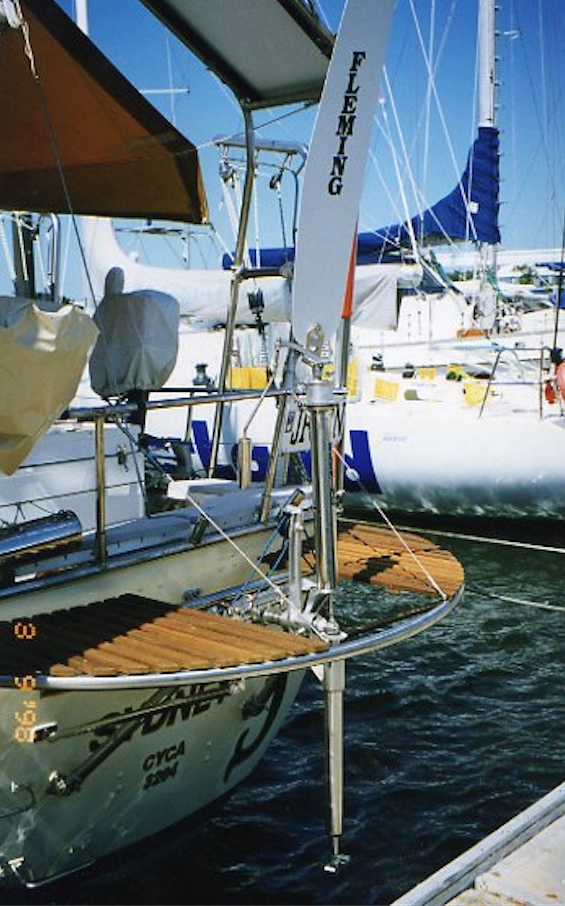
My visit had a serious purpose: I wanted to ask Kevin Fleming face-to-face what had prompted him knowingly to infringe one of my intellectual property rights. The new design for his Fleming system was a virtual clone of my own models, but when challenged he stood his ground: “I know what I am doing, you can take me to court, please”. Why, I wondered, should people who put themselves on the wrong side of the law use court action as a threat? Quite remarkable. Again.
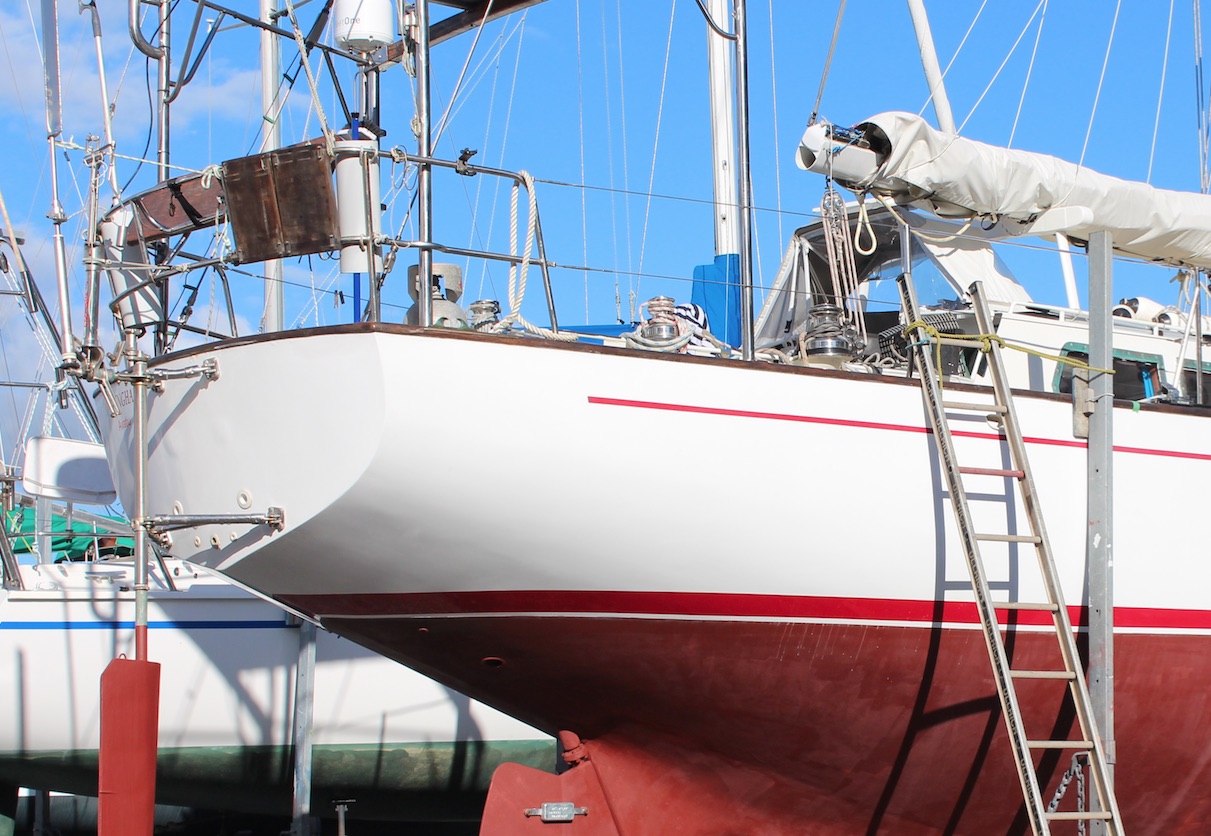
Kevin subsequently launched a copy of my Pacific Plus too. Shortly afterwards he sold the business to Tom Worth, who suffered a very rapid onset of buyer’s remorse as the discrepancies between what he thought he was acquiring and what he had actually ended up with became too gaping to overlook. Tom, previously a seasoned campaigner in the helicopter business, later managed to compel Kevin Fleming to reverse the sale when it emerged that the latter had apparently attempted to mislead him … with a stack of orders … orders that had originally been Windpilot Pacific Plus orders … Windpilot Pacific Plus orders that my former partner Dirk R. Weiter had hoped to exchange for cash…
Tom sent me this interesting e-mail once the dust had settled:
“I gave it my best shot but came up short. I will keep my comments about Kevin to myself. We did not part as friends. I have noted that the US representation passed from me to another poor chap. I’m not sure how long he lasted with Kevin but then it went to the WaterMaker Store. They have now dropped it. Kevin’s ‘partner’ in Australia who was producing them while Kevin was up here, emailed me that he was no longer building them. I would say the trail of past representatives tells the story.”
The www.flemingselfsteer.com domain has been unreachable for some time.
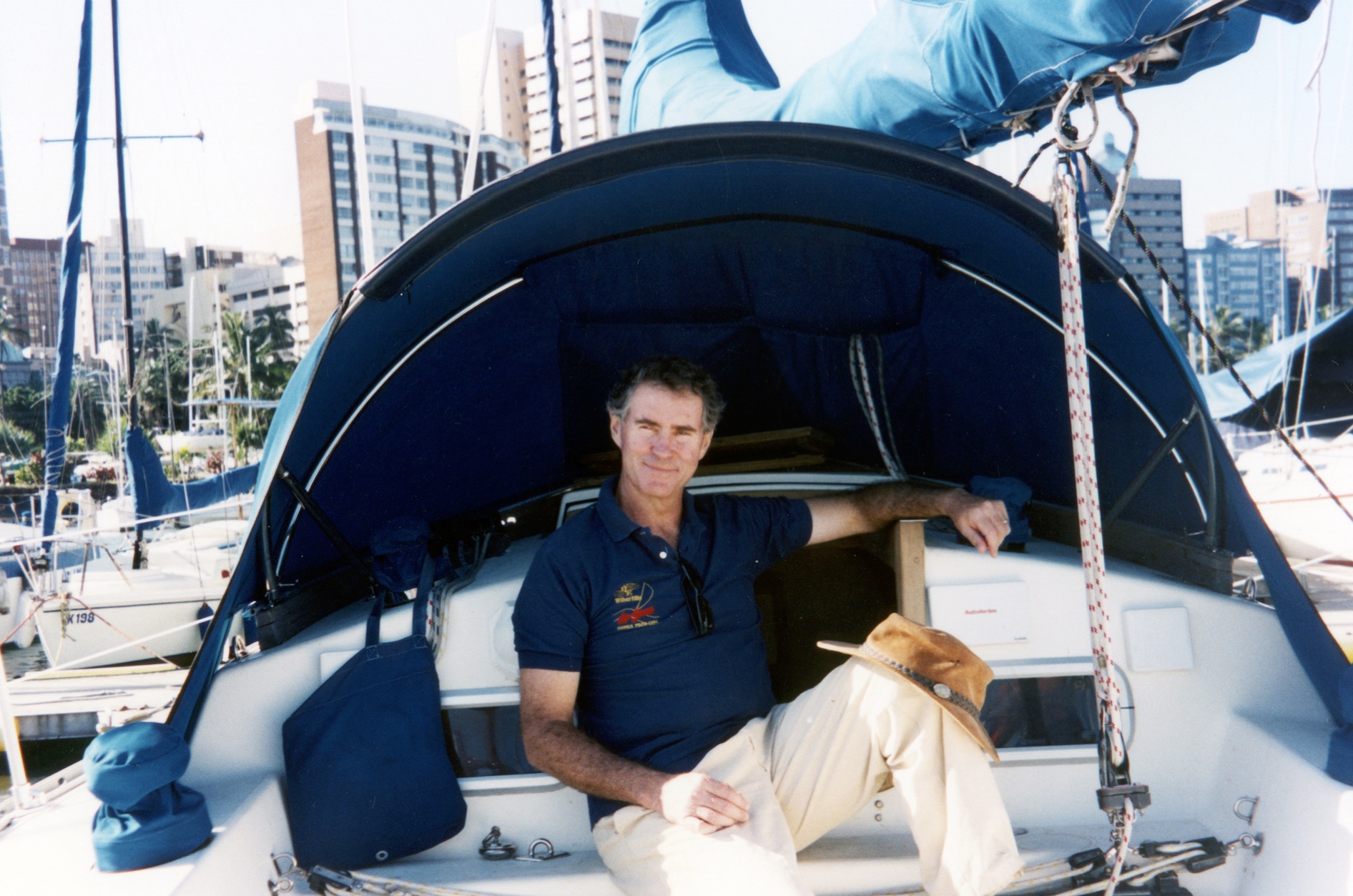
TRENCH BOWDEN – DURBAN SA
When my friend Geoff Hilton-Barber revealed his plan to make a singlehanded passage from Durban to Freemantle in Australia, I of course had to fly down to South Africa to talk to him about it: this was an audacious challenge for a blind yachtsman to undertake. Naturally I was keen to have a look around while I was in the area and it didn’t take me long to discover thatanother clone of my systemswas being manufactured in Durban’s port district using an adventurous outdoor sand casting method. The “inventor” of the Neptune windvane self-steering system, Trenchard Bowden, turned out to be a former Windpilot customer.
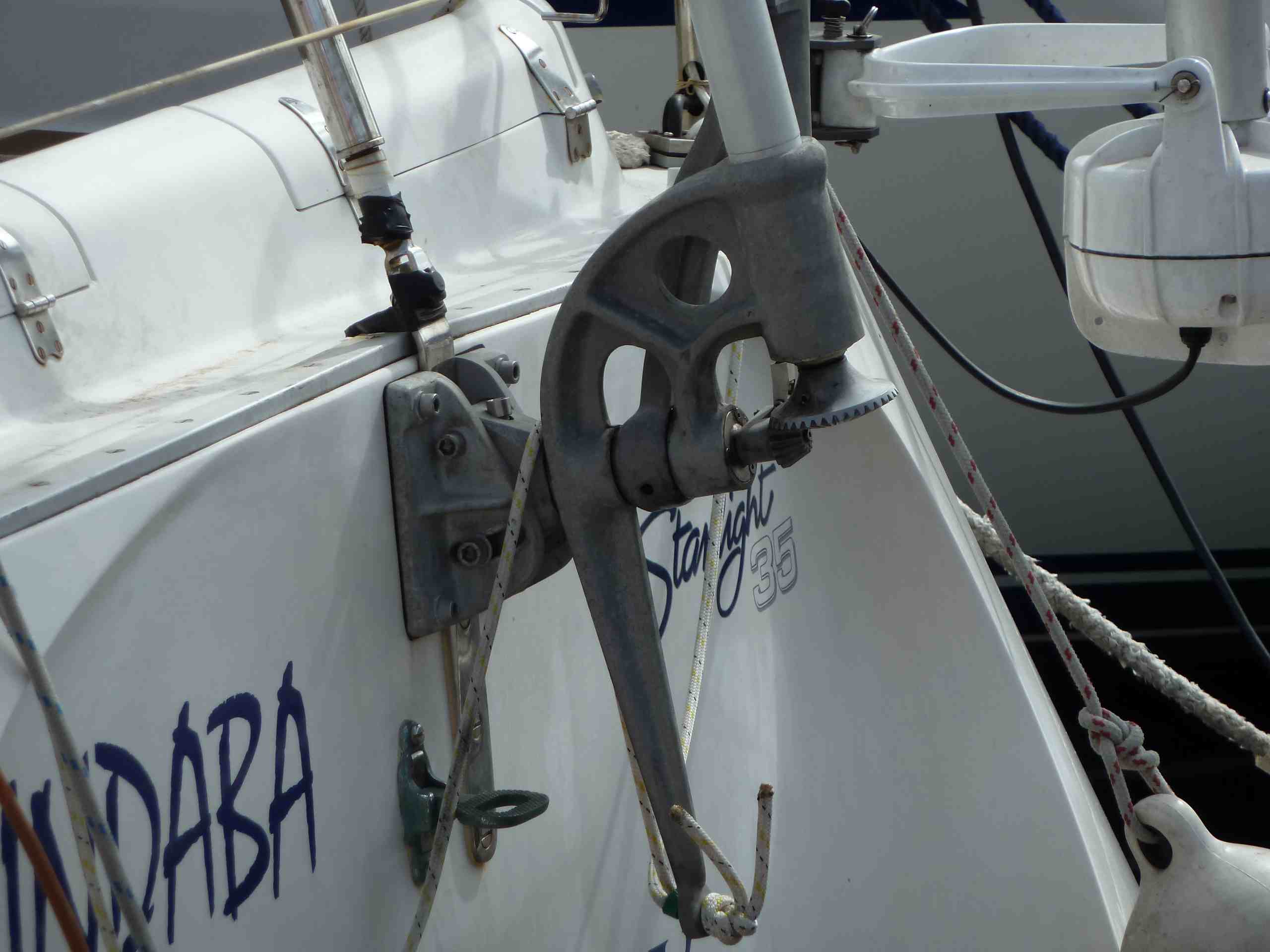
Talk of the Neptune system reminds me of the 1997 Christmas party at Durban’s Point Yacht Club Durbanwhich saw sailors from all over the world celebrating in one part of the building while Trench held his own private party in a separate room. The opportunity proved too powerful to resist and I marched in to the suddenly silent gathering to let him know exactly how things looked from my angle. Venting my spleen like this turned out to be a very good way to clear my head and it was in Durban that I first began to see all this plagiarism in a more positive light: if people all over the world were starting to emulate my design concept, I realised, perhaps it made more sense to regard this as the finest compliment the original could possibly receive. The thought instantly brightened my day. I had no interest in constant strife, after all, and here was a way to turn developments to my advantage. I had found the beginning of the path to that “position of relative comfort”…
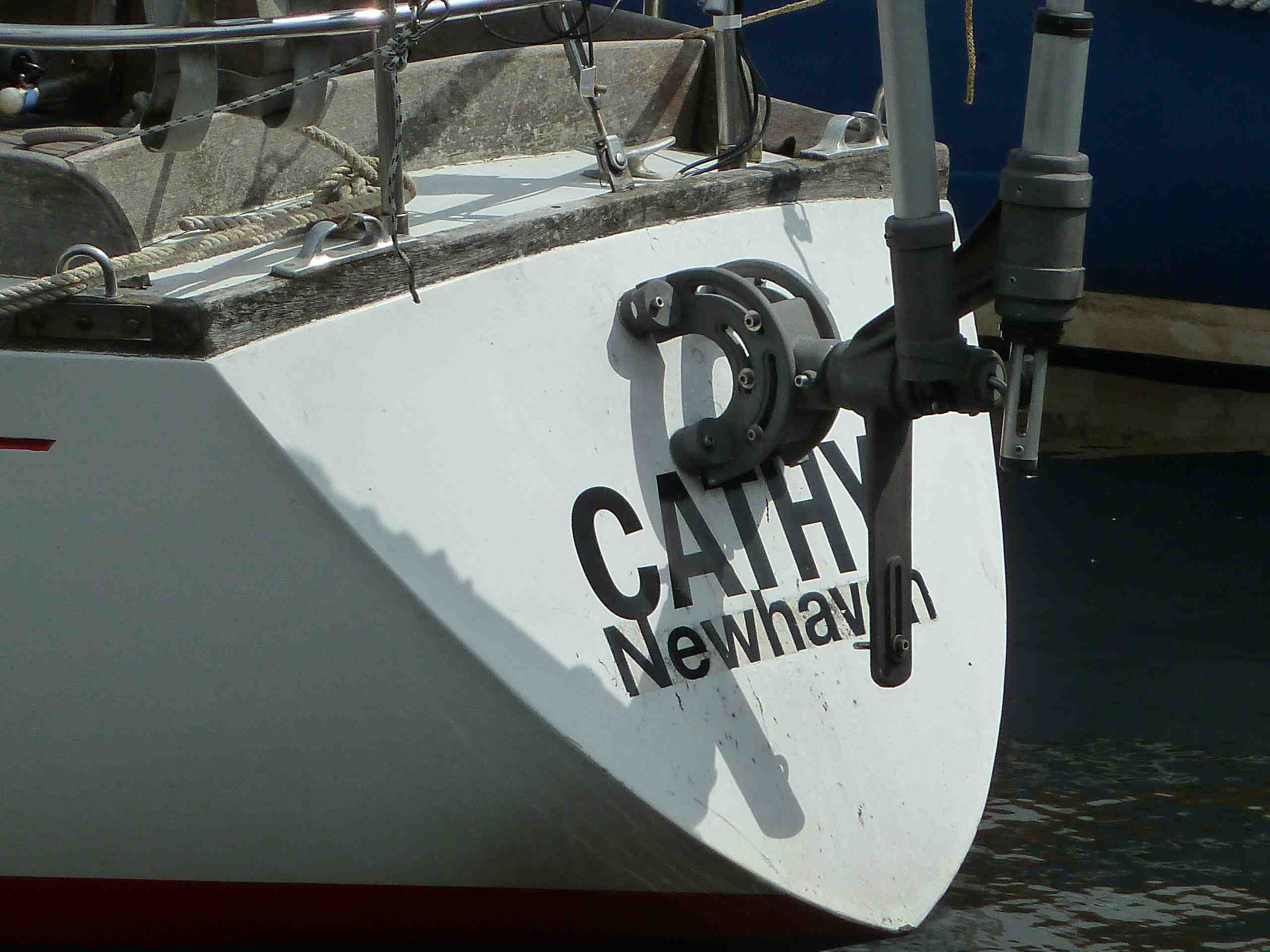
THOMAS WHITTALL – ARGENTINA-GERMANY
About ten years ago, conversations with sailors alerted me that we had another copycat system on the scene. No more than mildly surprised by the news, I contacted the man behind the South Atlantic, Thomas Whittall, to suggest that he might consider removing the many original Windpilot photos from his website. This triggered an extraordinary correspondence that ended with the following note:
Stop, or I will response to your aggression with prices. 3 Eu cost me the aluminium, 2 Eu cost a worker per hour. I can go 50% down, and still earning money. I will never recognize your laws in my country.
You can forget it! And you know that I don´ t copy nothing!
If you want to continued, is your choise.
I fight all my life; one thing I learn no one win, think about, later will be late.
Don´ t loose time in stupid discussion is not useful.
Thomas
The market salves all wounds. Whenever sailors meet, the truth soon finds its way to the surface – and the truth is most certainly out there now, not least among those unfortunate sailors who have had to pay twice for their error (once in discomfort at sea when they learned they had the wrong self-steering system and a second time in hard cash when they had to buy a replacement):
REINHOLD MICHELLY – LA ROCHELLE
Many years ago Reinhold Michelly and family said goodbye to their German homeland and set sail on their Hallberg-Rassy – complete with Windpilot Pacific – for a new life in the famous French port of La Rochelle. Not long afterwards Michelly was back in Hamburg to present his demand that I entrust the French market to him as my Windpilot agent. The tone was definitely more ultimatum than polite request or reasoned proposition. Tempted as I must have been to drop spontaneously to my knees, kiss his hand and thank him for his generous offer, the nature of the suggestion and the general chemistry were just too far out of whack for me to allow myself to be drawn into another adventure.
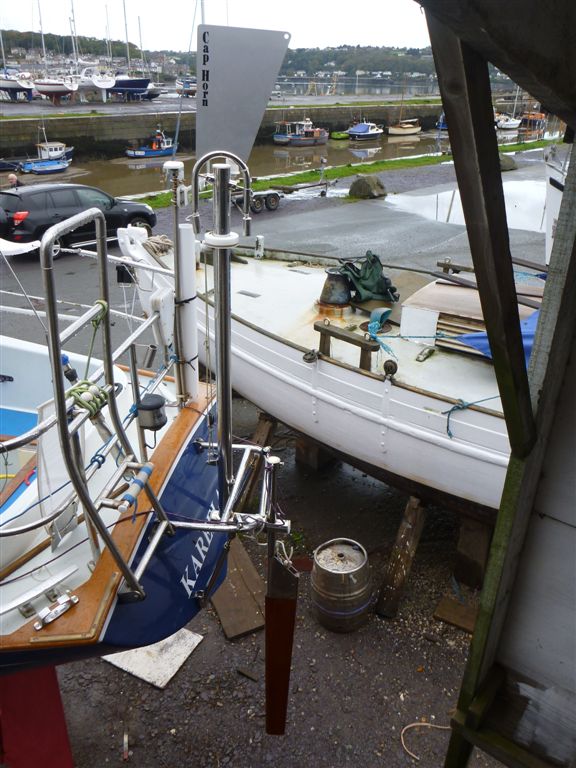
Soon enough I learned that Michelly had had a more successful time pitching his idea to Yves Gelinas, the Canadian manufacturer of the CapeHorn systems, and was now acting as the brand’s representative in the EU. Exactly how events unfolded next escapes me just now, but it wasn’t long before the market was graced with a new windvane steering system, the Beaufort Castor (a system one would have been hard-pushed to tell apart from the CapeHorn even with the closest of scrutiny). I couldn’t help smiling at this: my social depth sounder had kept me off the rocks at last!
The Beaufort range later grew to include other clones that, whether by accident or intent, shared more than a few features with the Aries/Monitor andmy Pacificthree of them crossed the starting line in Les Sables d´Olonnes.
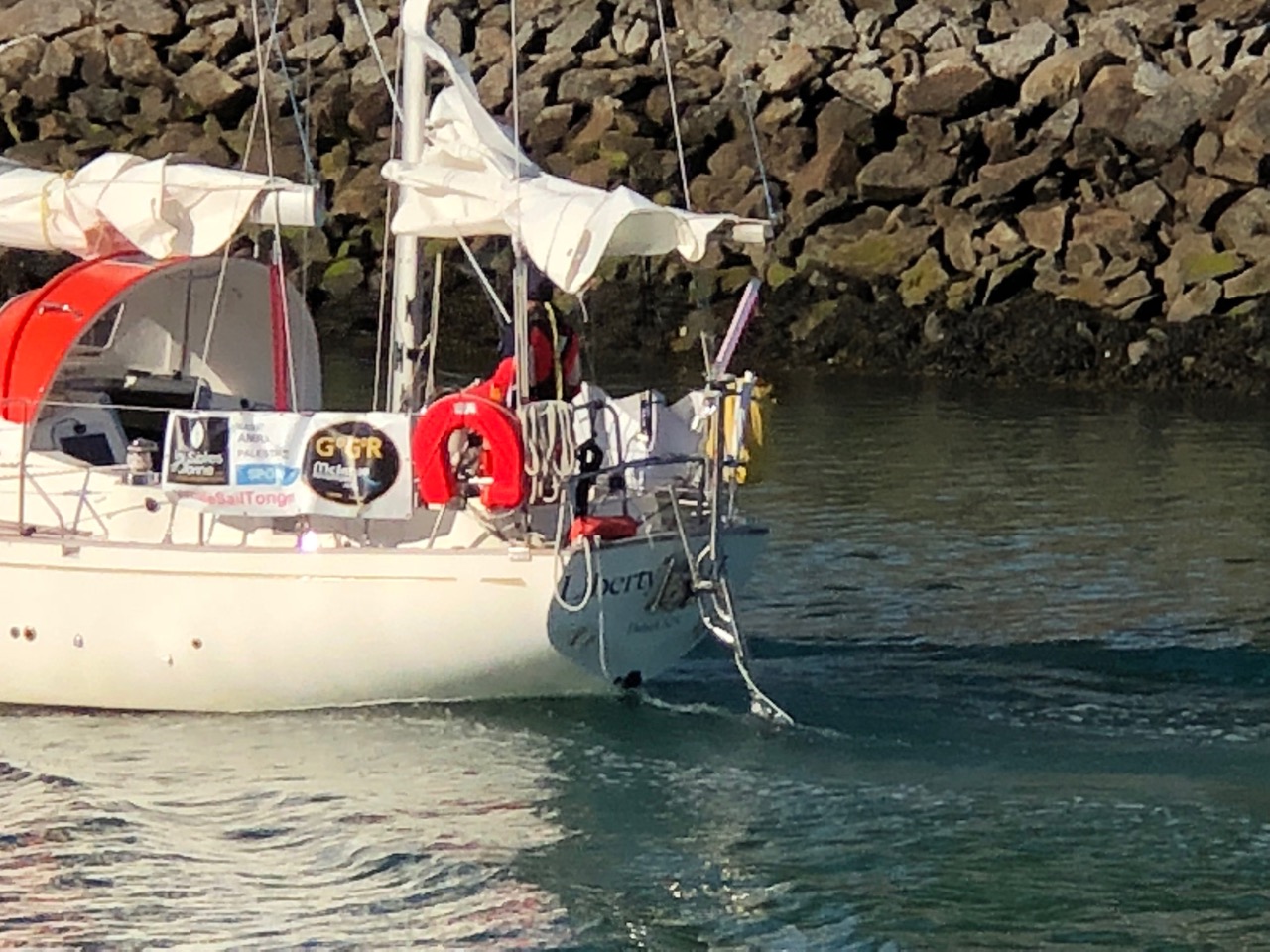
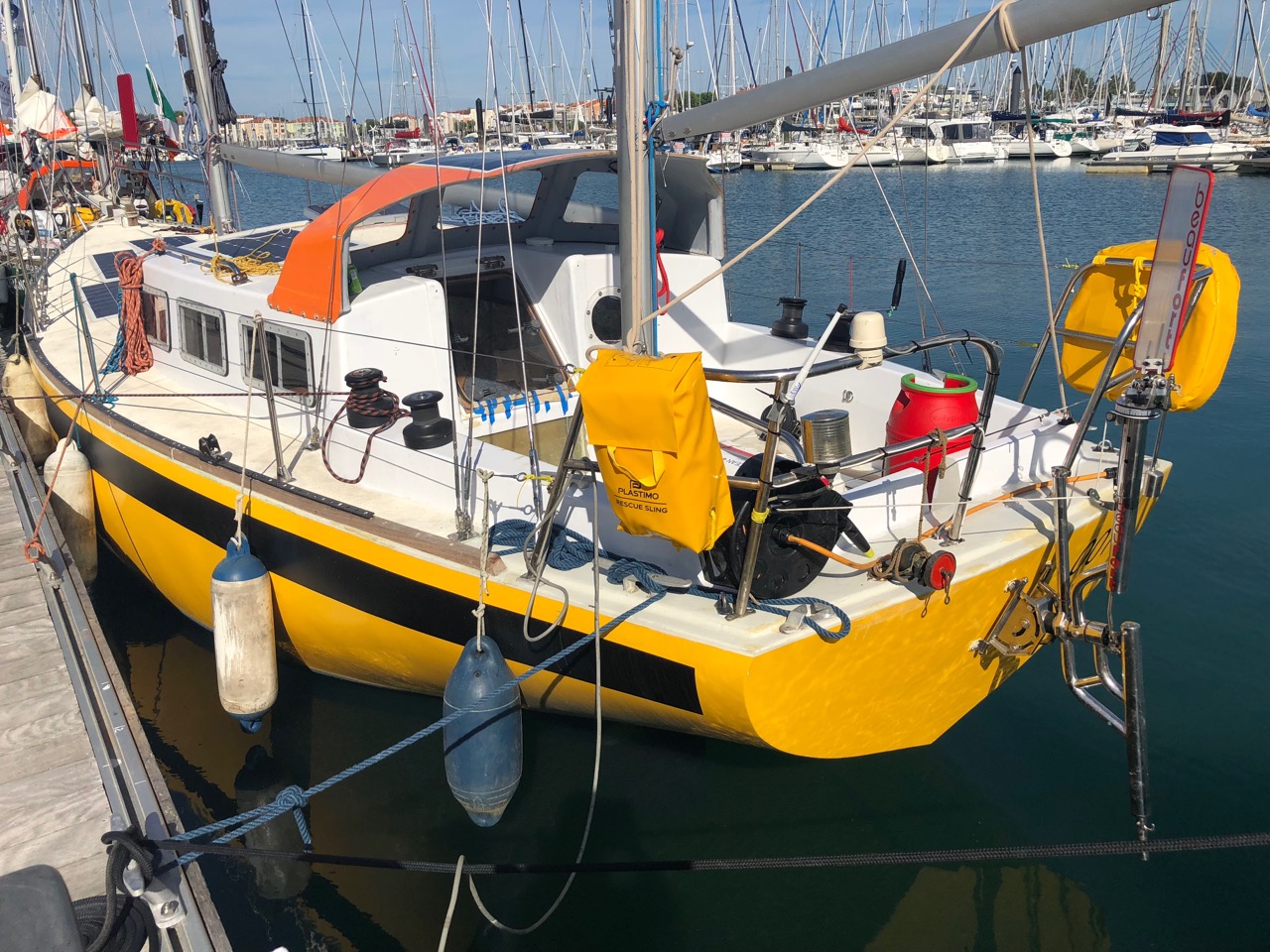
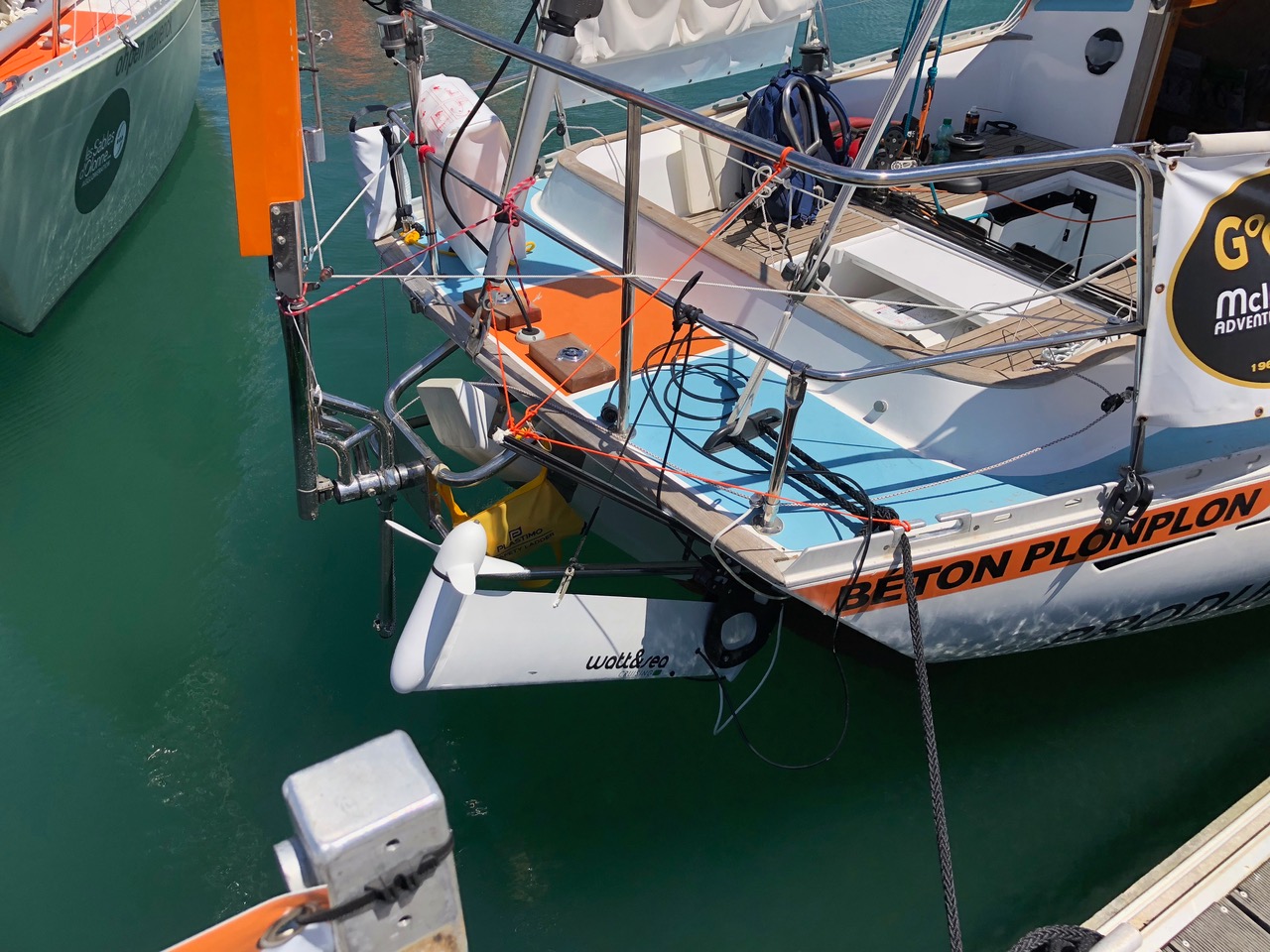
Actually, I also noticed a Pacific Plus clone at one Salon Nautique in Paris.
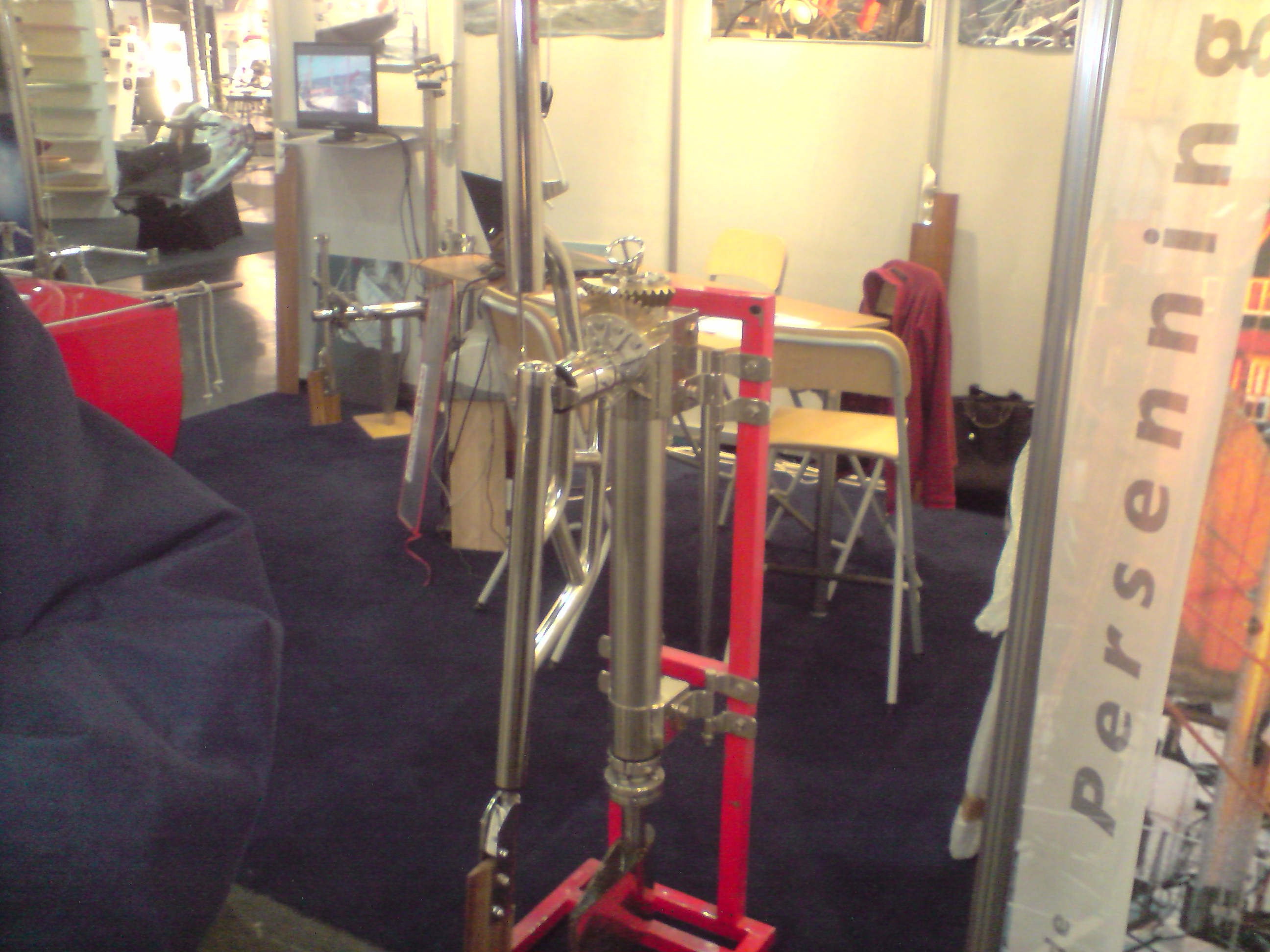

PETER MATTHIESEN – BRAZIL
Just for the sake of completeness and to avoid any further repetition, the curious story of a Dane whose extraordinary take on the concept of reasonable behaviour (in relation to both the market and the previous owner of his company, Nick Franklin) allowed him to introduce his home-baked “bad weather problem” idea into the world of mechanical self-steering can be found here:
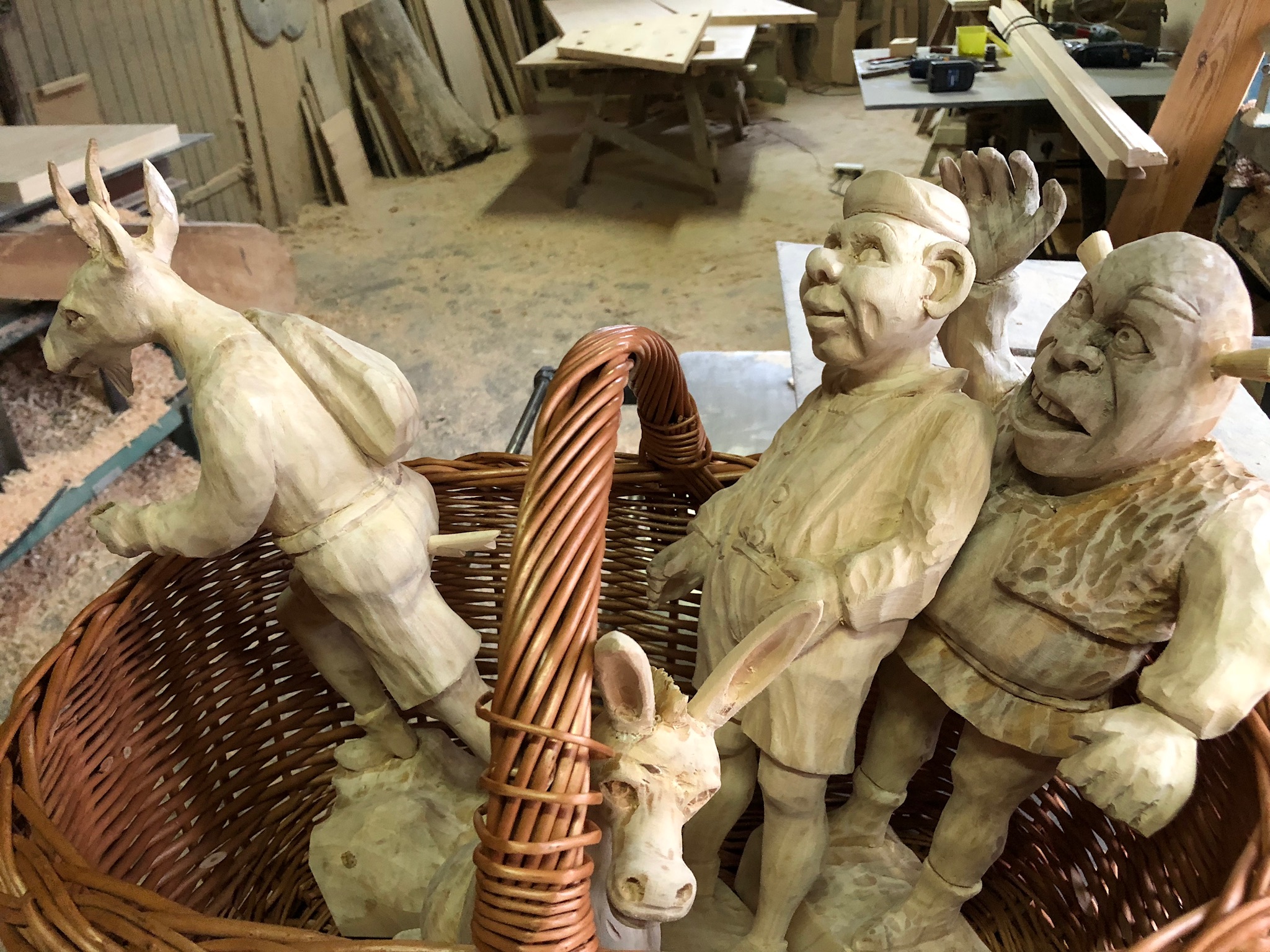
MISAPPREHENSIONS: WHAT AND WHY
Can it be that the visual impression created by the sheer number of Windpilot systems abroad on the Seven Seas has brought on hallucinations? Thing is, a huge number of Windpilot units have left our gates over the course of 50 years of direct marketing, almost all of which are still intact and functional.
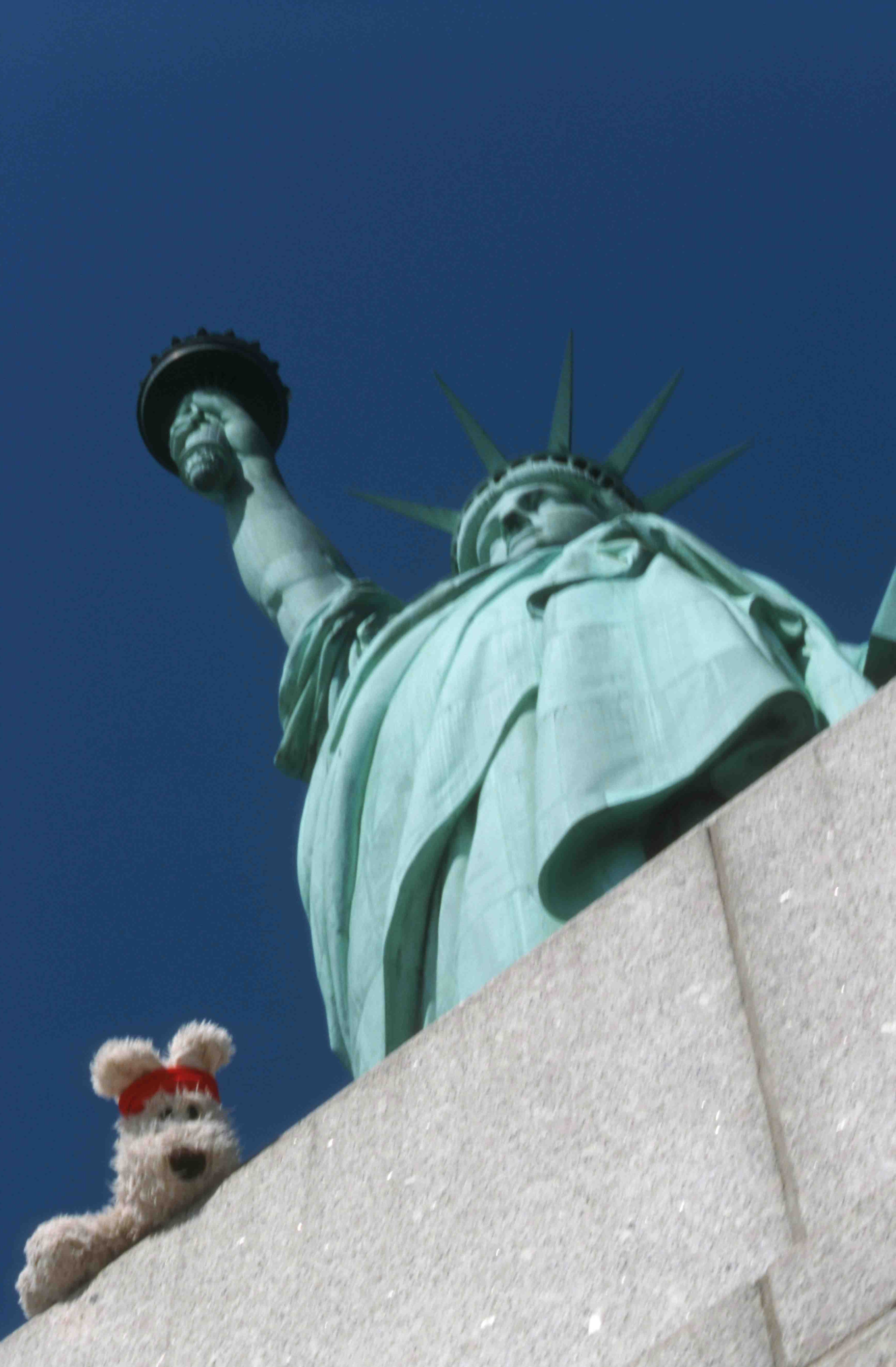
Sailors in the USA have often shared with me their assumption that Windpilot must be a pretty big company. My response has always been to explain a few simple facts that everyone can appreciate:
– Windpilot systems will continue to work almost indefinitely provided nobody tries to use them as a fender.
– Most users buy a Windpilot once and never need to replace it.
– This means that a new customer has to be found for every system sold.
And this job of finding new customers is reliably performed by sailors themselves.
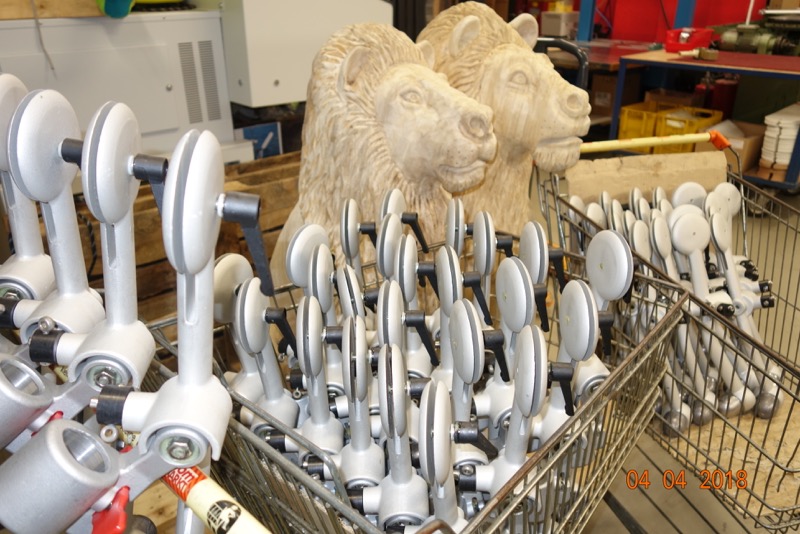
What do I say to the copycats? We use an industrial standard gravity die/permanent mold casting manufacturing process that is very complex but delivers an unbeatable level of visual perfection. The capital expenditure required for tooling and production workflows is huge, so it is impossible to manufacture cost-effectively using these methods unless producing large numbers of units. Everything depends on having a market receptive to the products being offered – and it is to cultivating that market that most of my life’s work has been dedicated.

The fact that my wife and I manage all of the company’s affairs between the two of us suggests that we have our overheads well under control, a point also backed up by the absence of any dramatic price increases over the last 15 years. Add in the fact that we sell direct worldwide now too and have no costs for boat shows or magazine adverts and it should be clear to anyone with an interest that ours is an efficient operation. We can only do all of this, of course, for so long as we can continue to rely on strong word of mouth marketing within the cruising community. Happy customers means more customers!
Luckily for us, making customers happy is very enjoyable work. As I may have mentioned before…
Peter Foerthmann (with the boss’ permission)

































hi peter .just saw this .the truth not told here .sadly .i retired over 7 years ago and sold the vane buss for sub sum .retired now on few acres .hope you are well and buss good for you regards . ps plenty of new boys ,a direct copy of my own gear,however if one builds a better mouse trap all works out ,